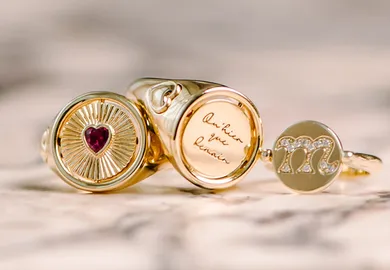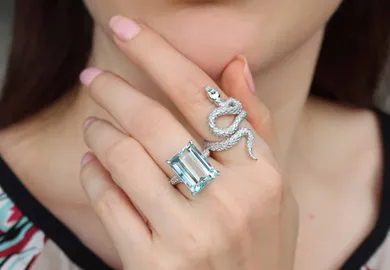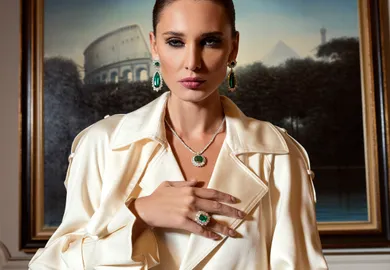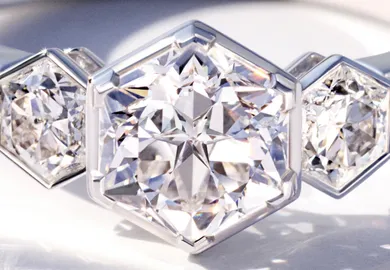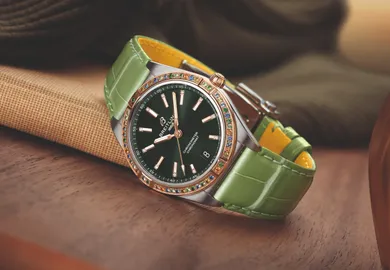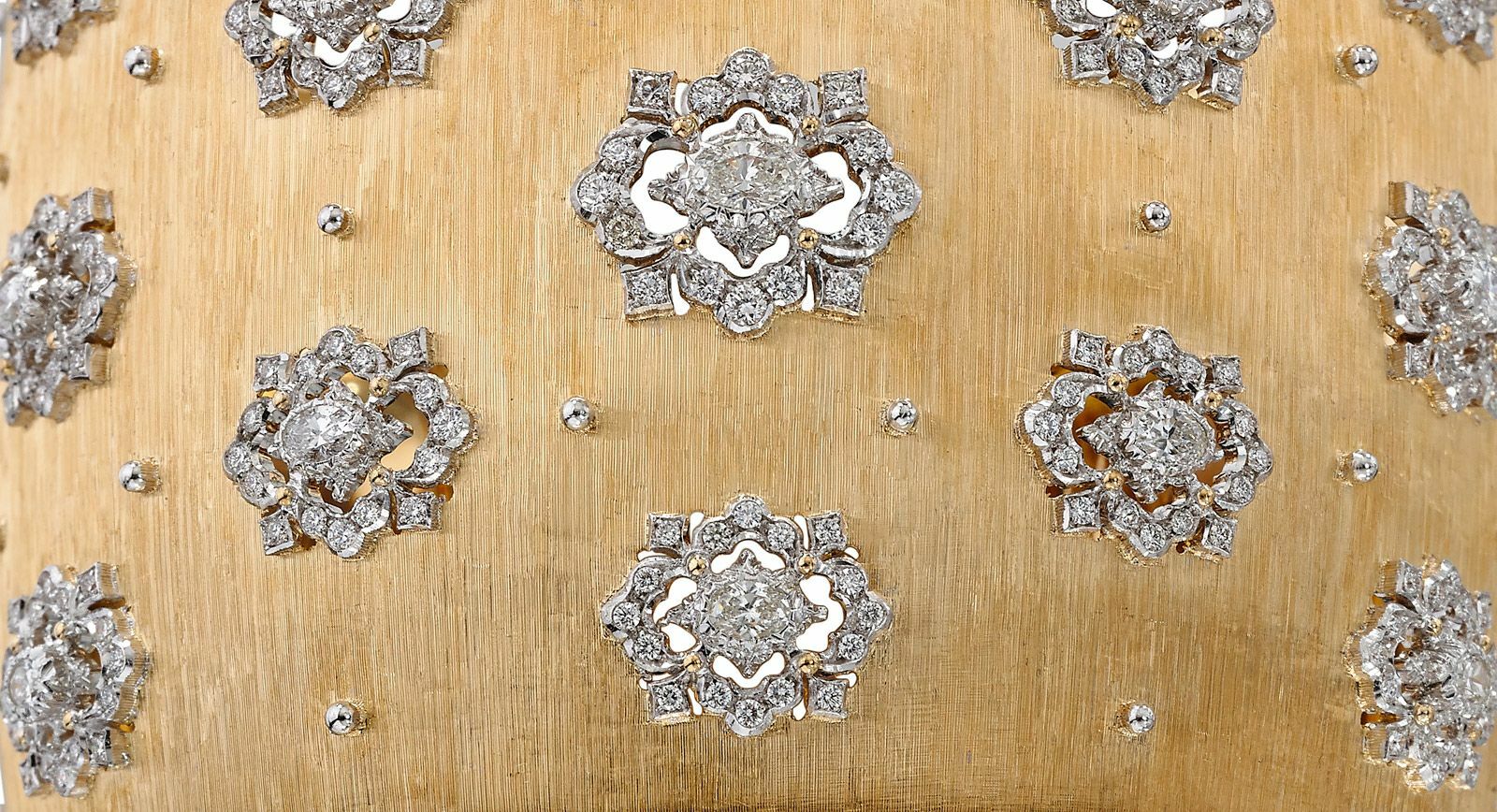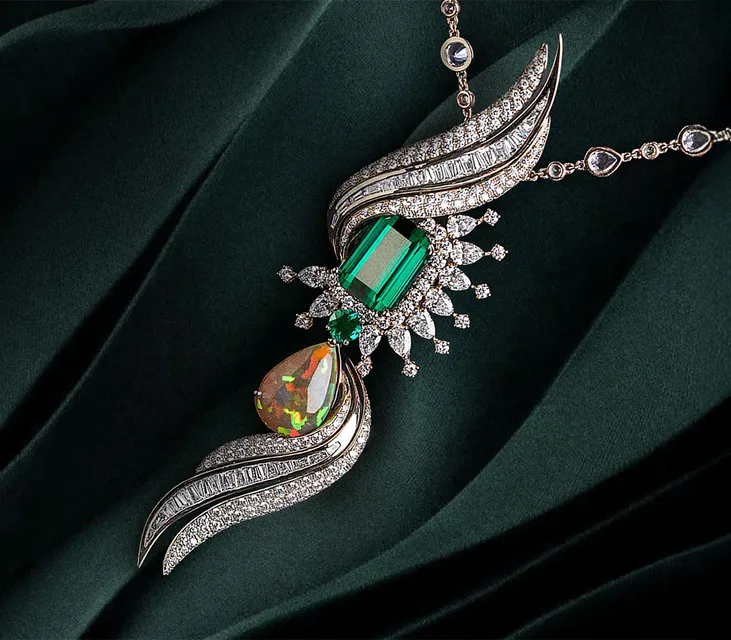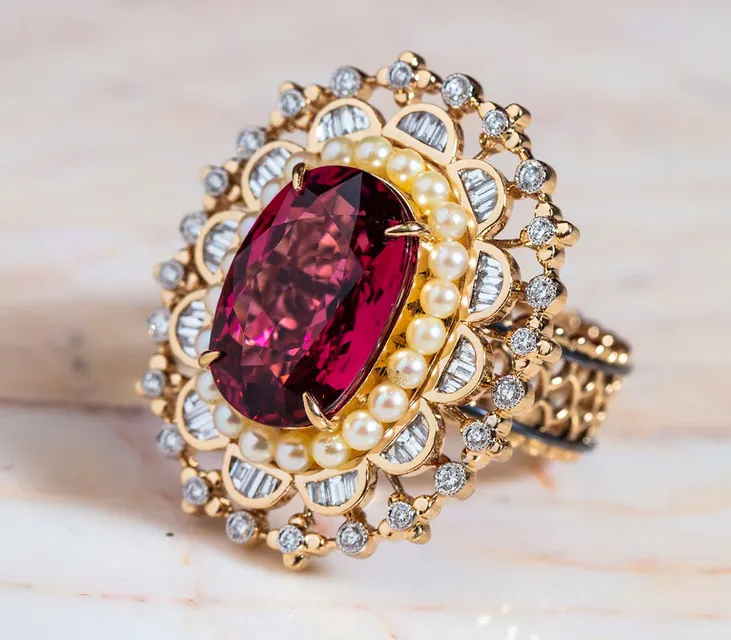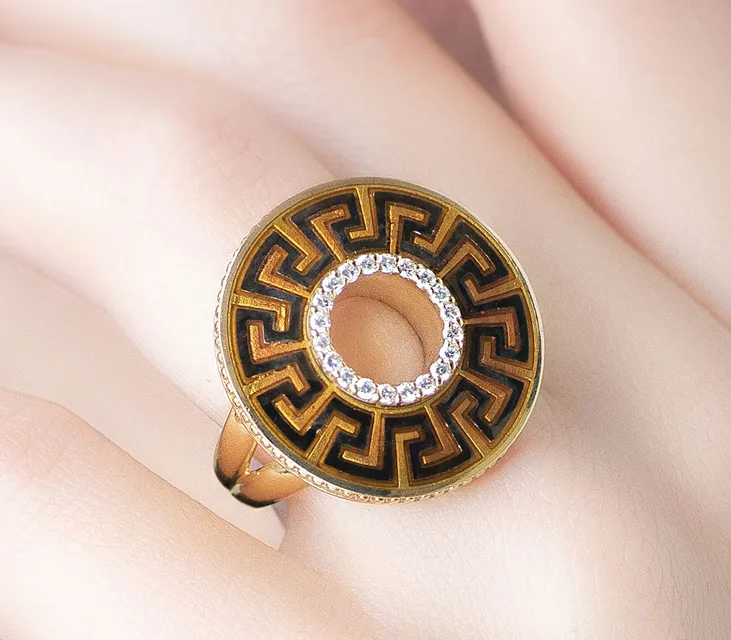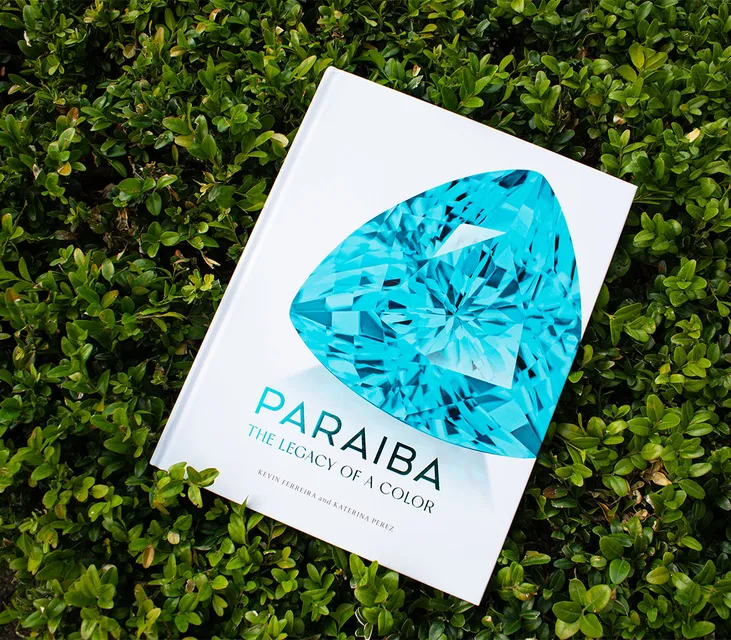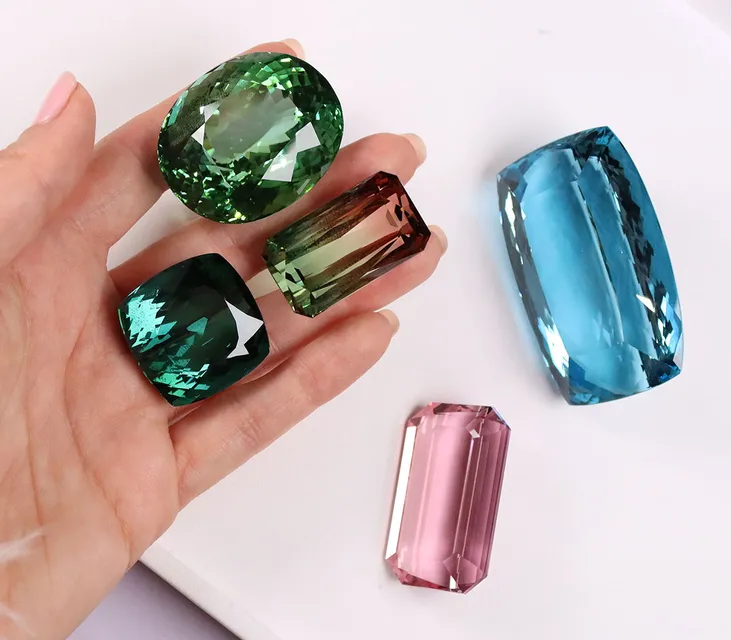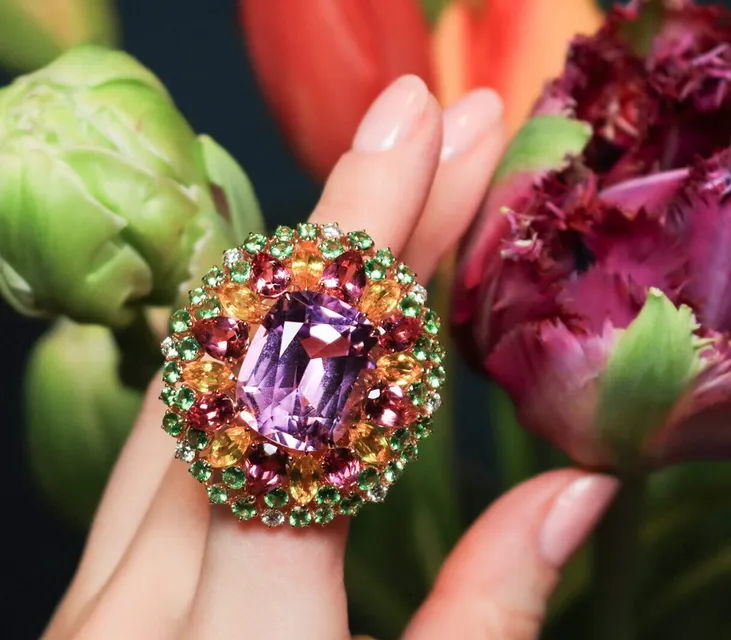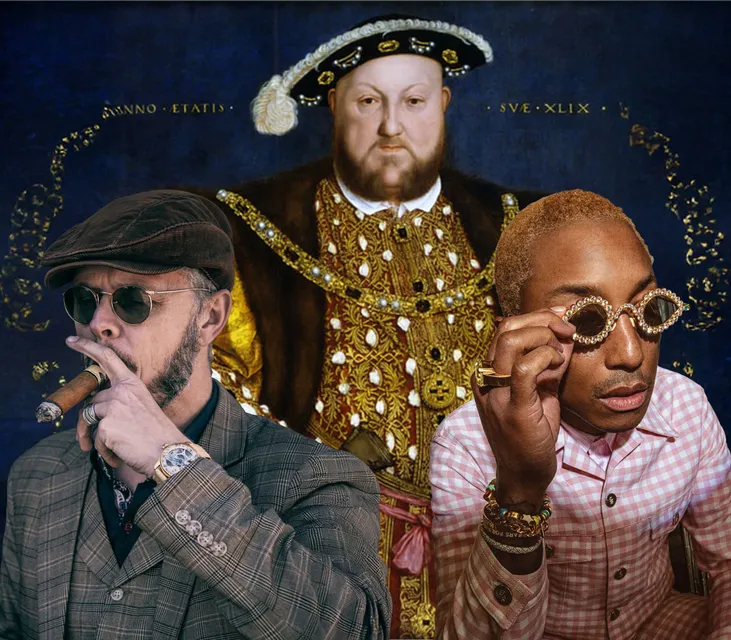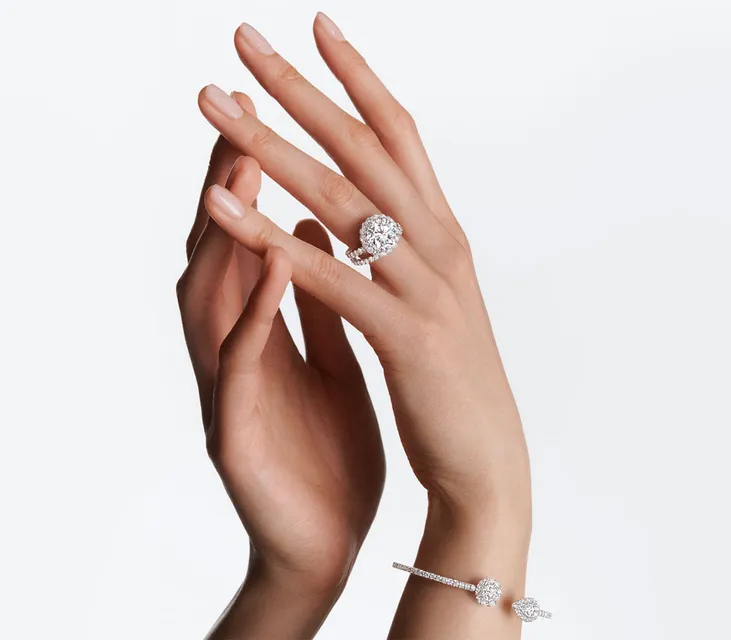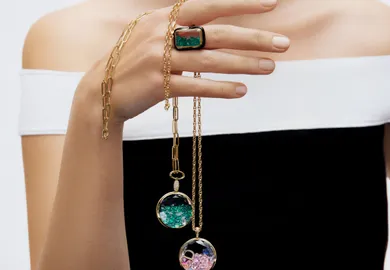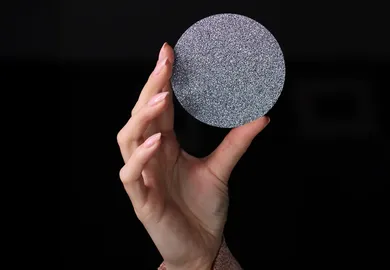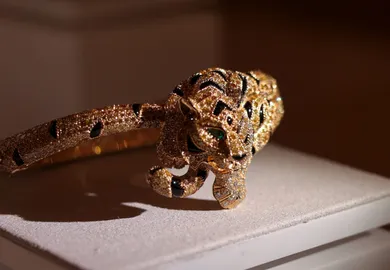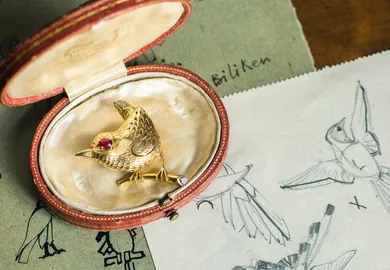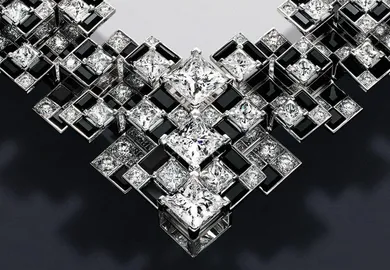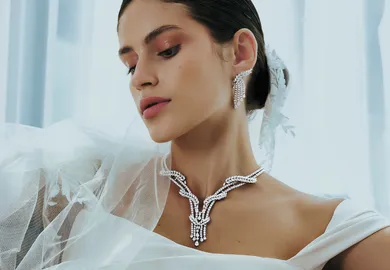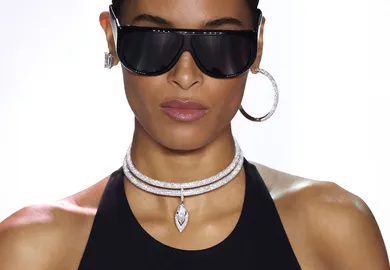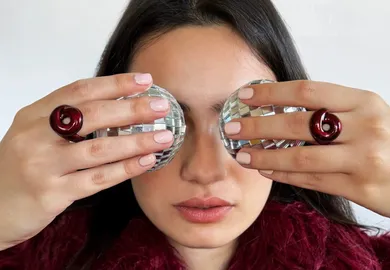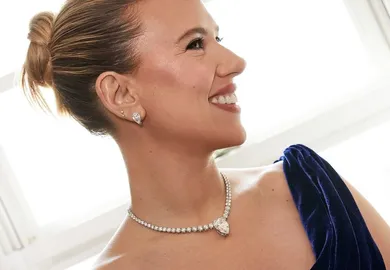
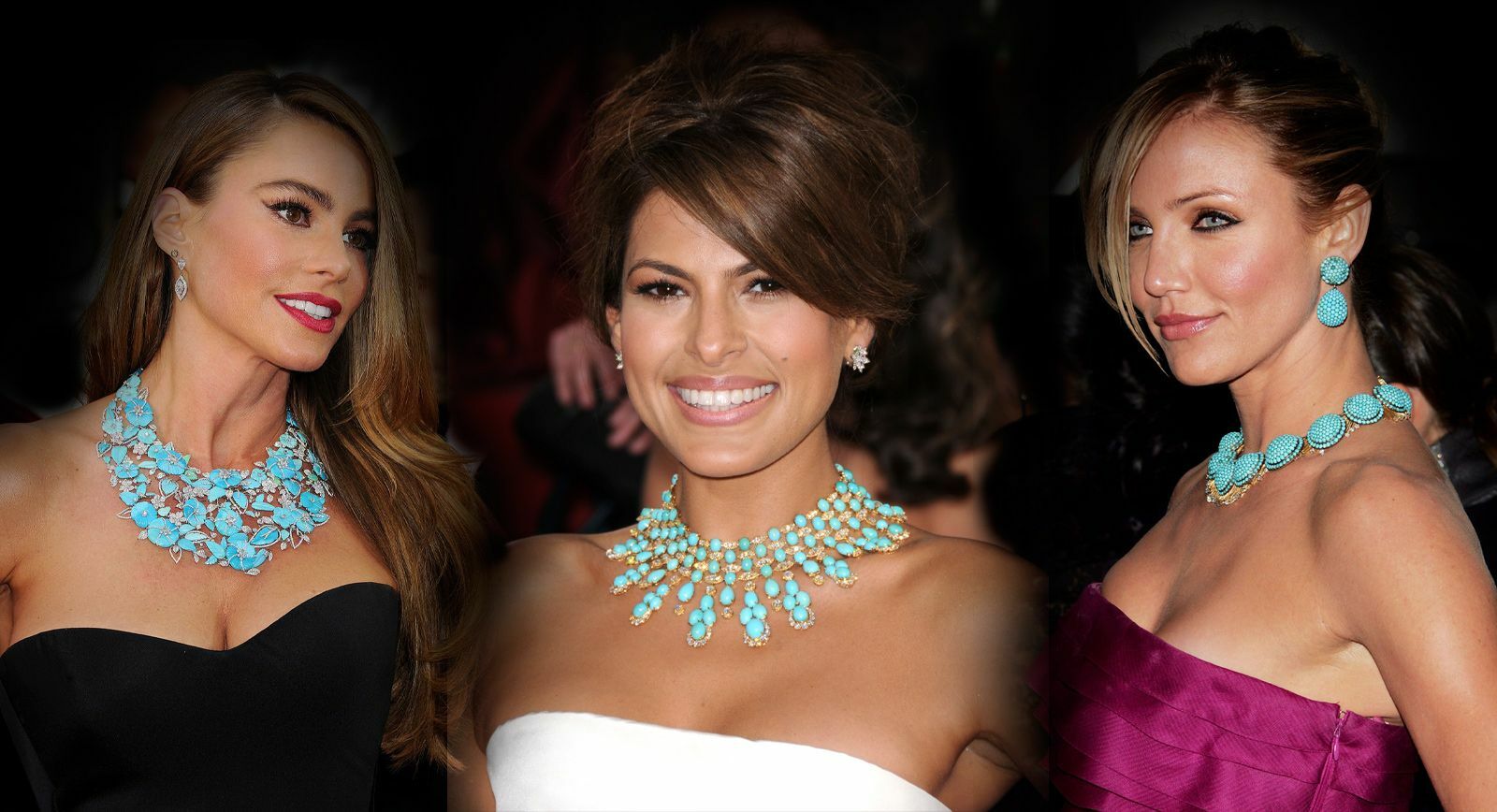
Blue Gemstone: Turquoise, or the Beautiful Sky
Turquoise, December birthstone, was discovered in Mesopotamia (modern-day Iraq) over 5000 years ago. Since then, it has decorated jewels of many different people and has also been ascribed many enthusiastic epithets: “the Egyptian Pharaoh’s stone”, “Tibet’s sacred stone”, “the celestial stone of the Native American”, “the favourite stone of the East”.
The Romans called this gem callais, which translates as “beautiful stone”, and in the 13th century it acquired its modern name of Turquoise (meaning “Turkish”) by French stone traders, who obtained the mineral in Venice from countries further south. The traditional colour of the mineral is sky blue, because the colour Iranian turquoise was once considered to the finest in the world. Nowadays its reserves in the region have diminished, and the majority of the stone with a very clear and intense colour comes from the “Sleeping Beauty” mine in Arizona.
In jewellery, turquoise is more often than not used in the form of beads, cabochons or carved into a variety of forms. In many ancient Arabian pieces of jewellery the turquoise was engraved and the carving would be filled with gold. Low density turquoise makes this process relatively easy and is perfect for creating large items, such as beads with many threads or a cuff bracelet. By the way, in spite of the fact that Turquoise is the stone of December, jewellery with turquoise can also be given as an 11th anniversary gift. And even if you’re not linked to any of these dates, if you have a liking for the sky-blue stone, just wear it and enjoy!
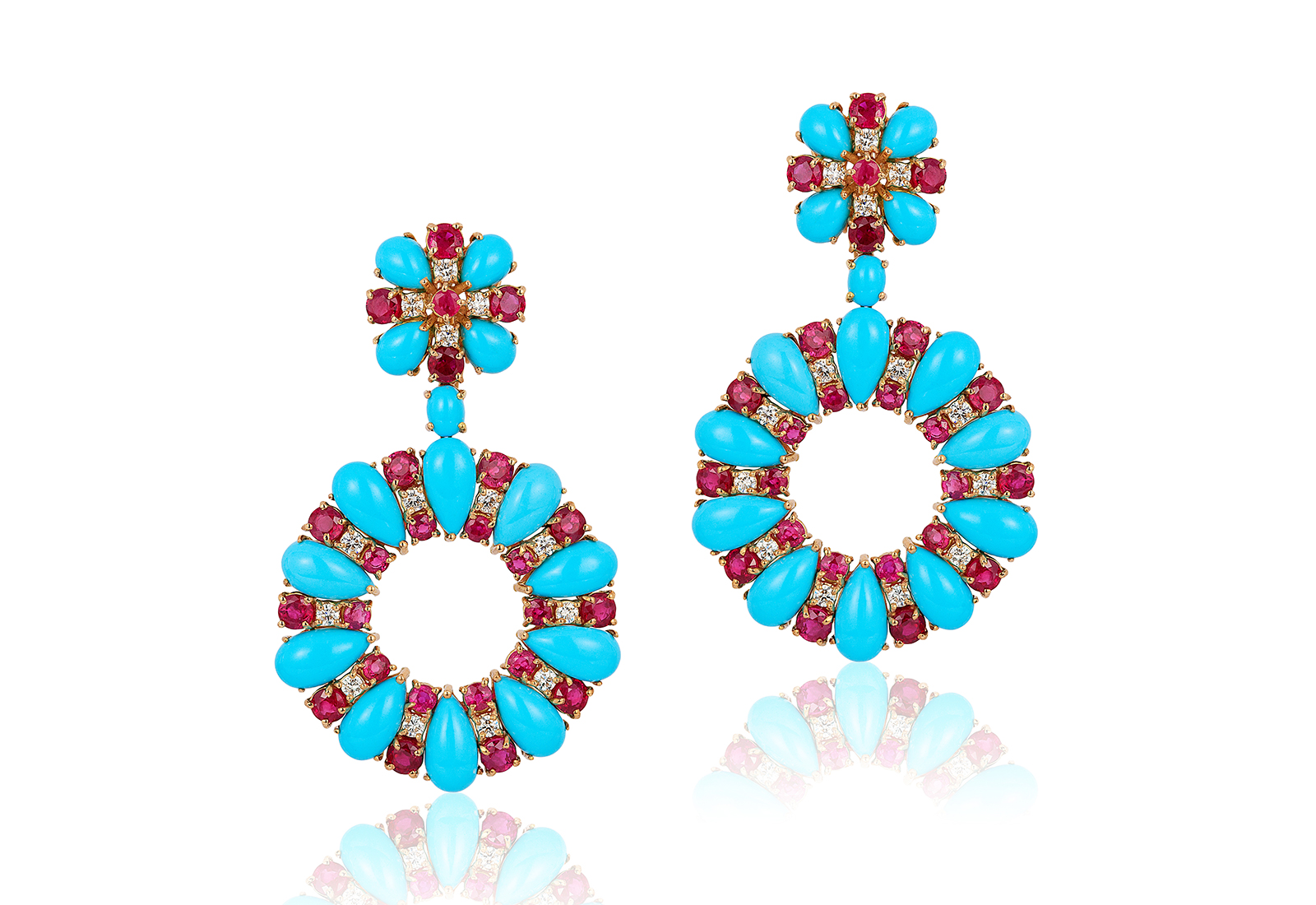
Andreoli
Andreoli
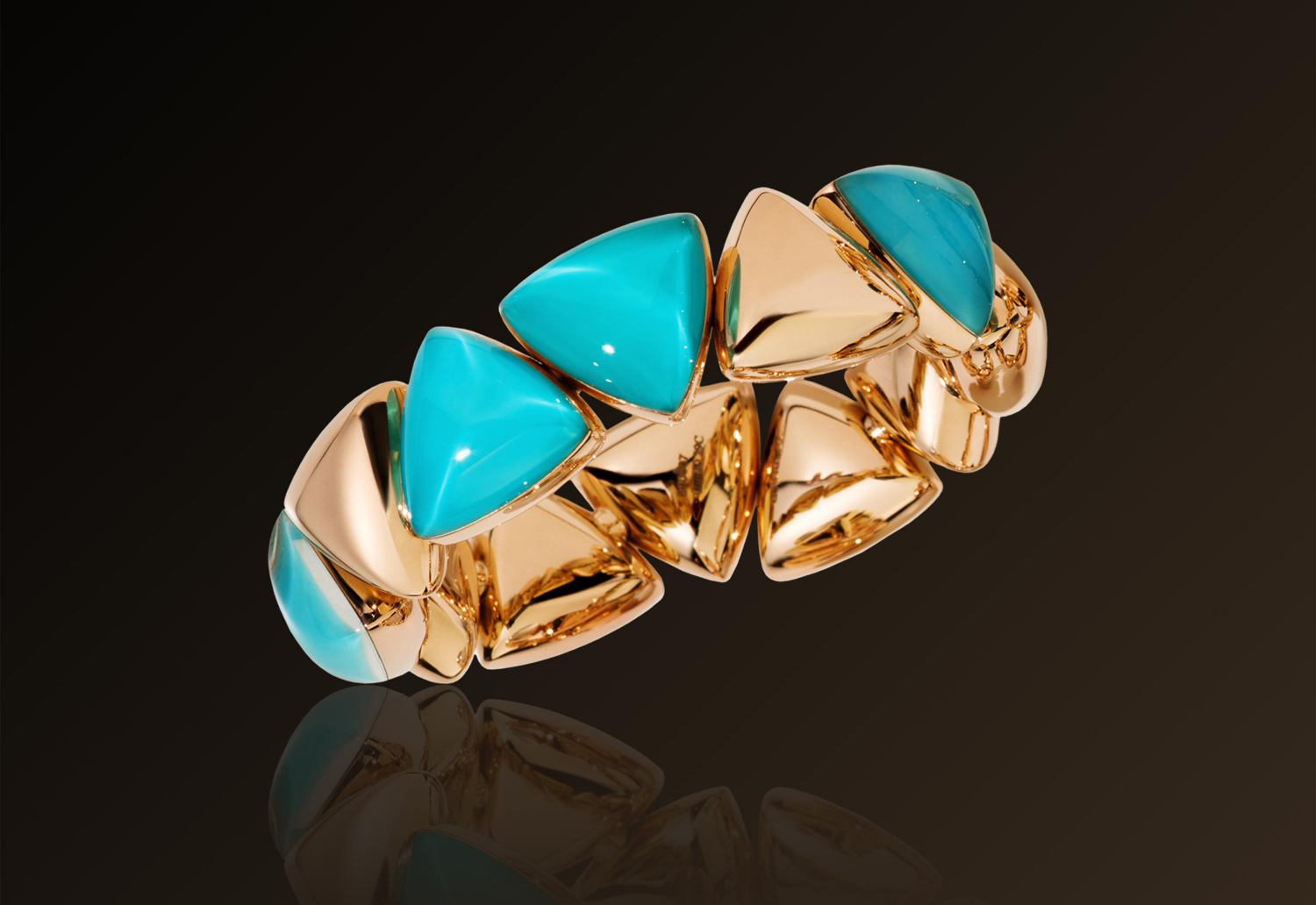
Vhernier
Vhernier
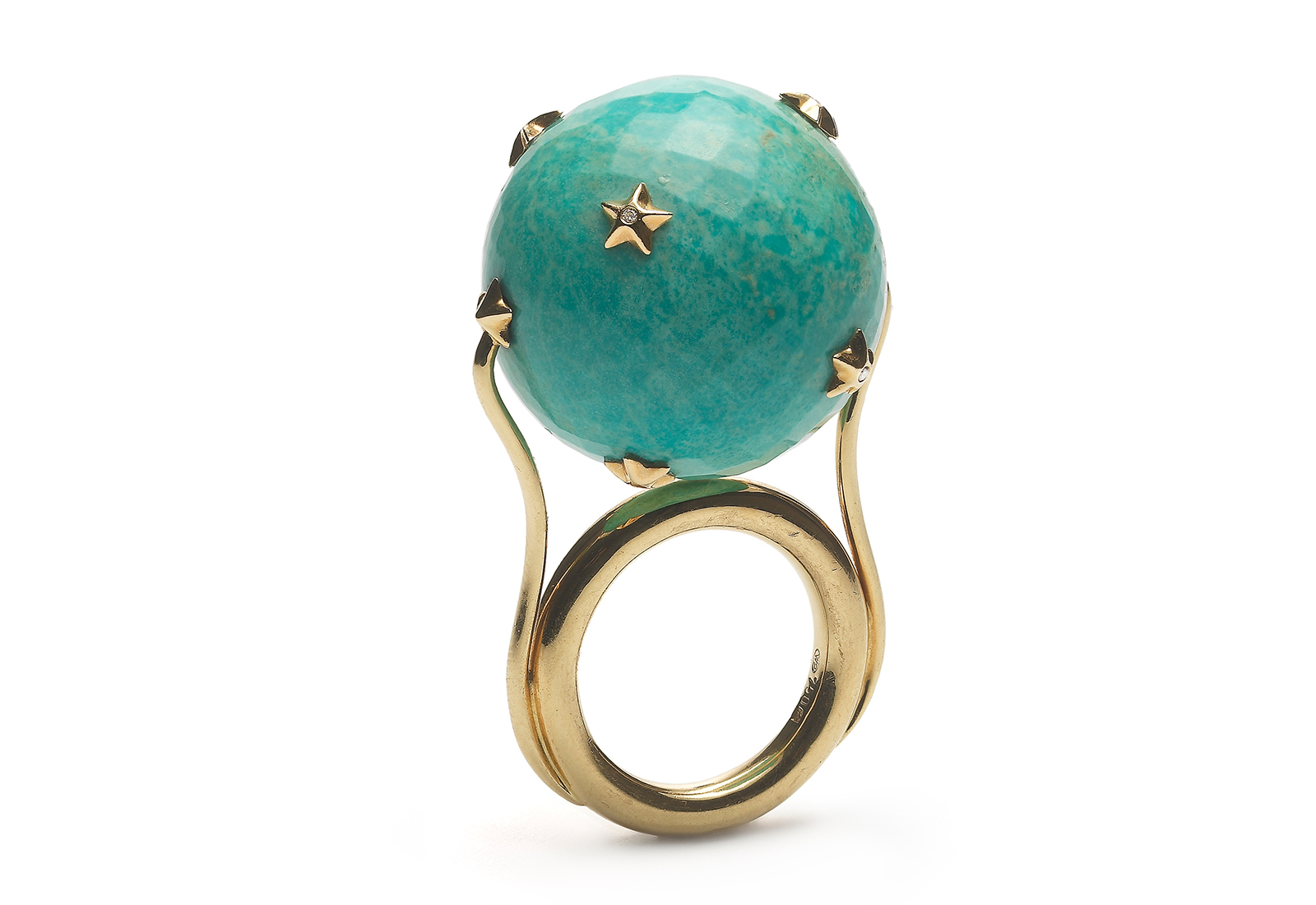
Bibi Van Der Velden
Bibi Van Der Velden
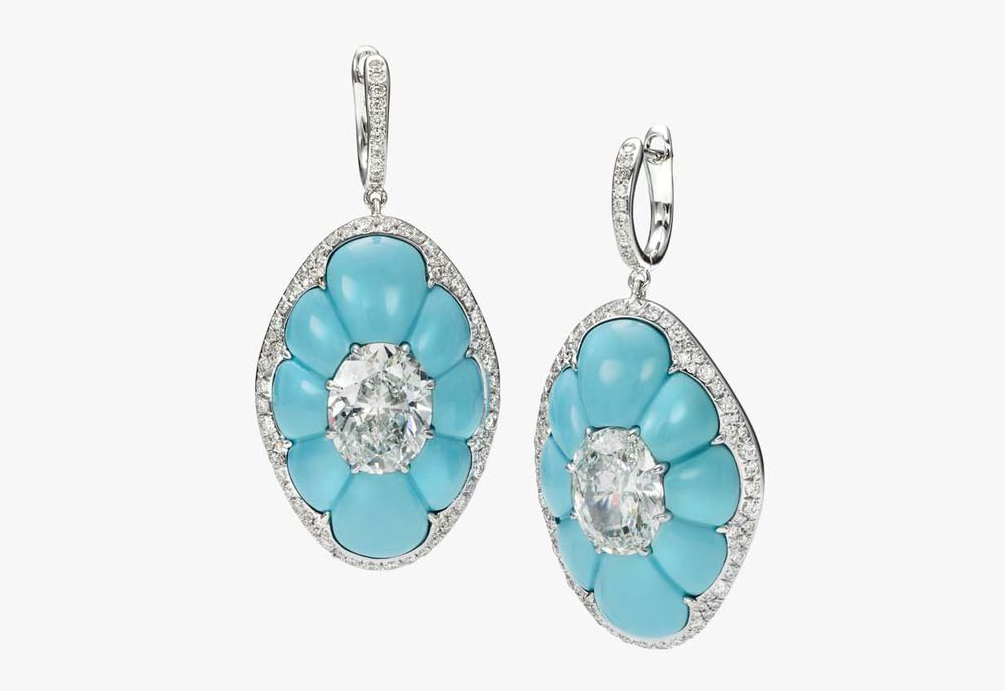
Boghossian
Boghossian

Cameron Diaz
Cameron Diaz
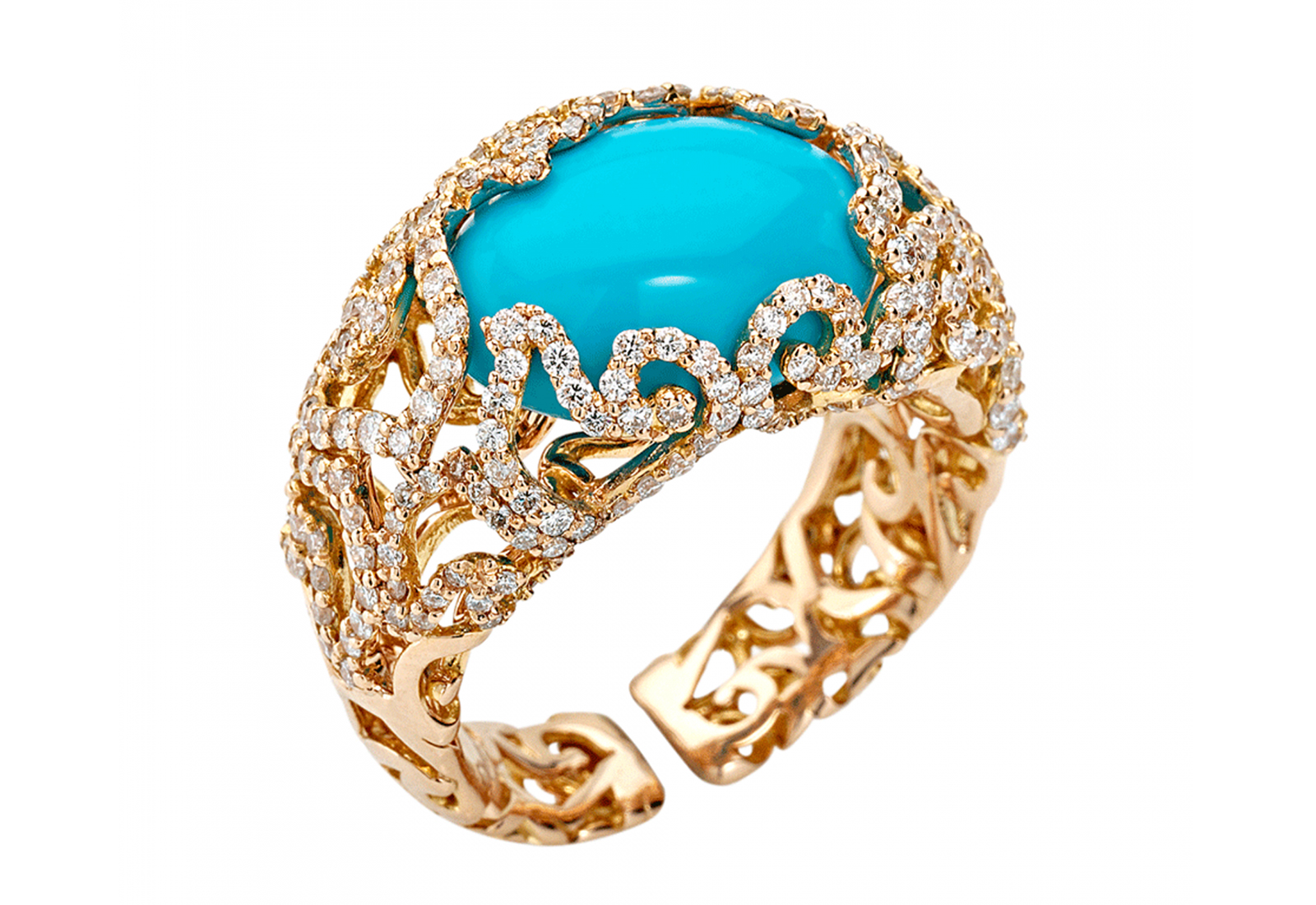
Chantecler
Chantecler
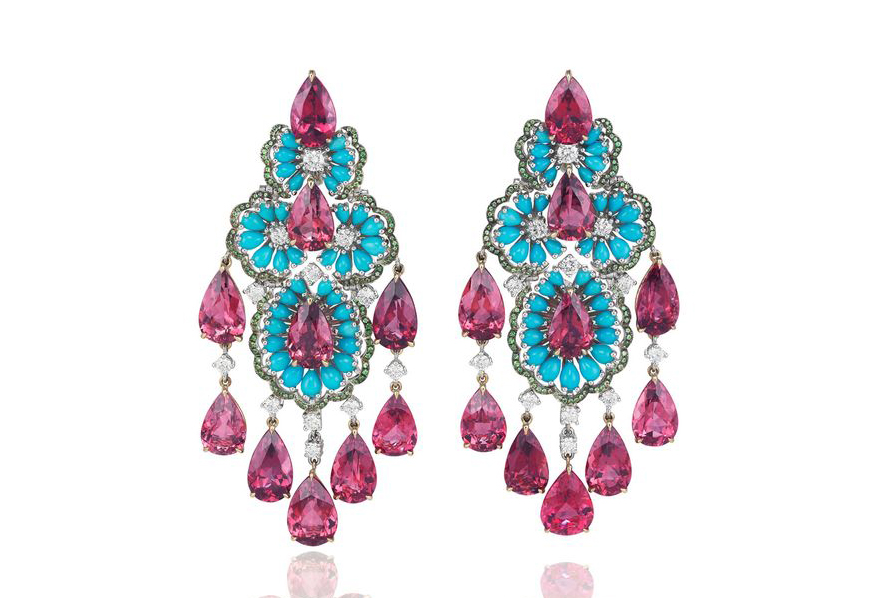
Chopard
Chopard
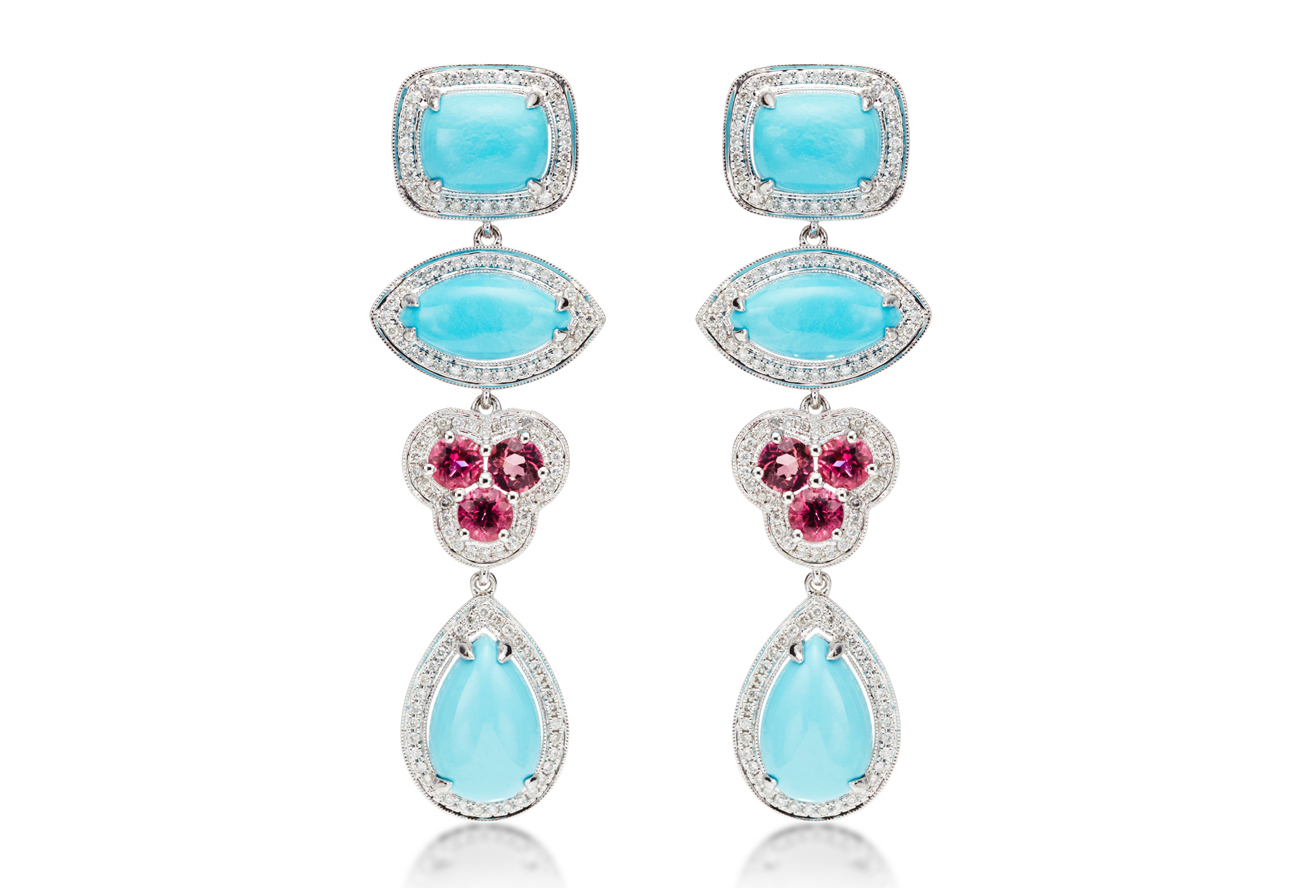
Dana Rebecca
Dana Rebecca
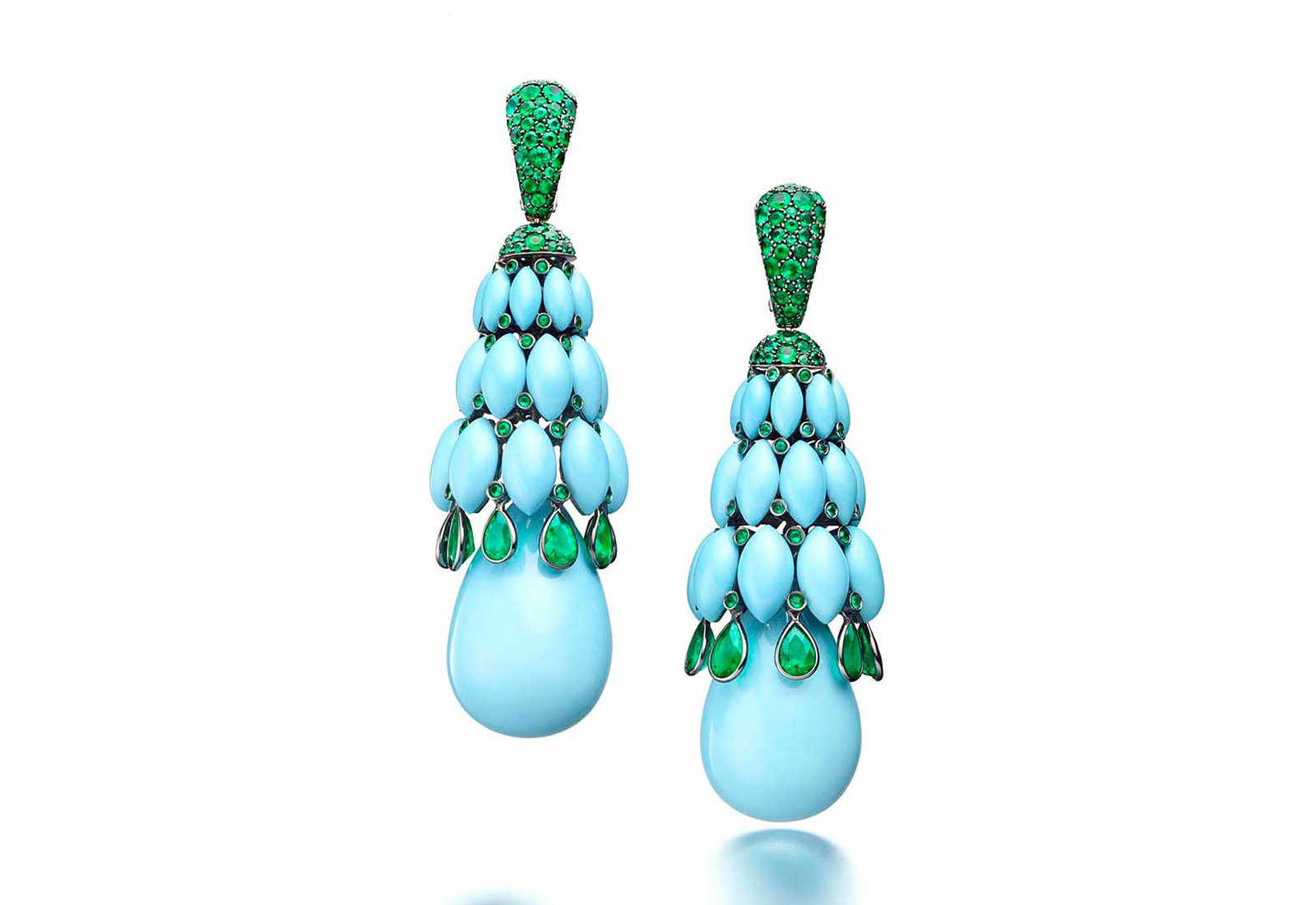
de Grisogono
de Grisogono
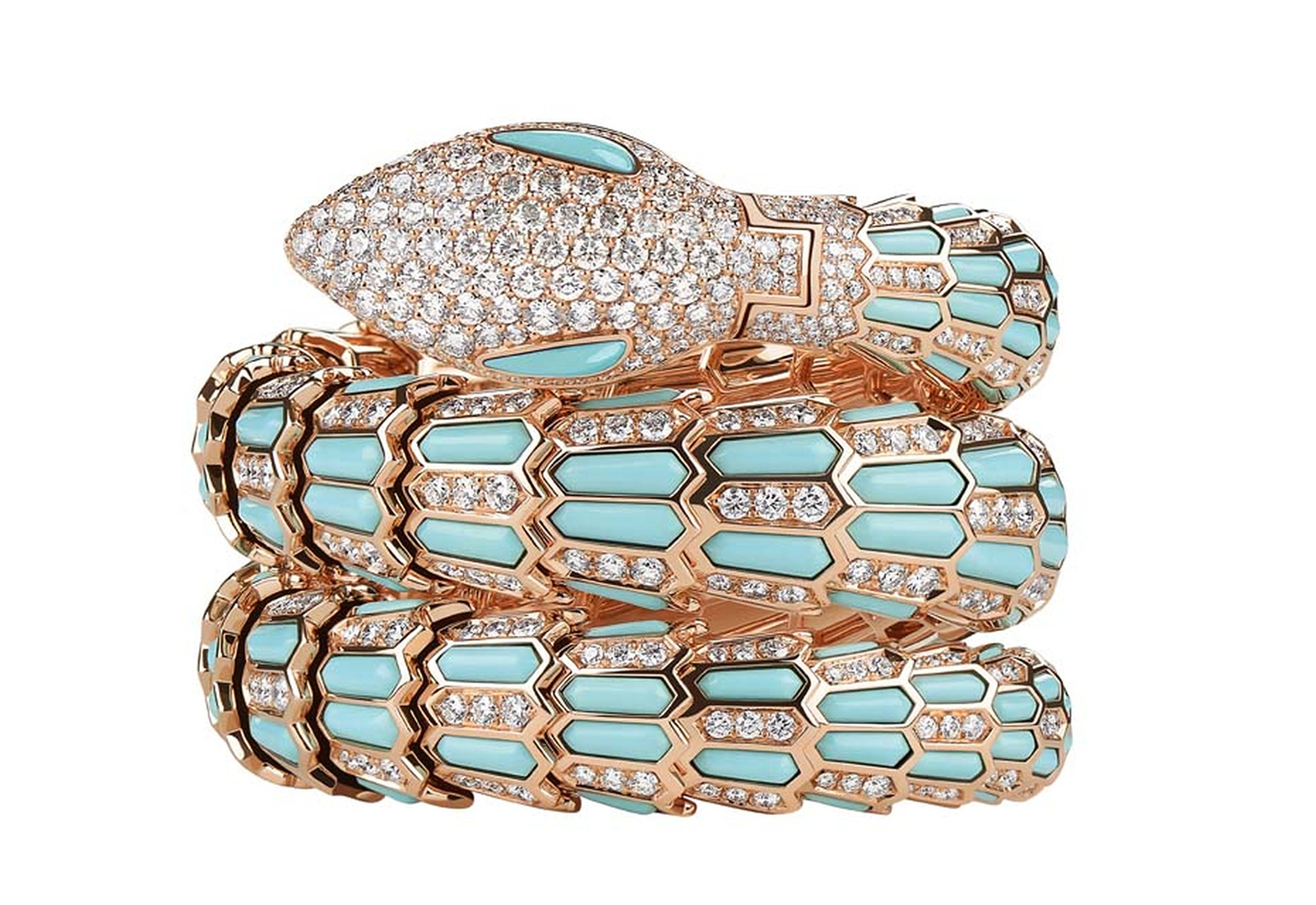
Bulgari
Bulgari
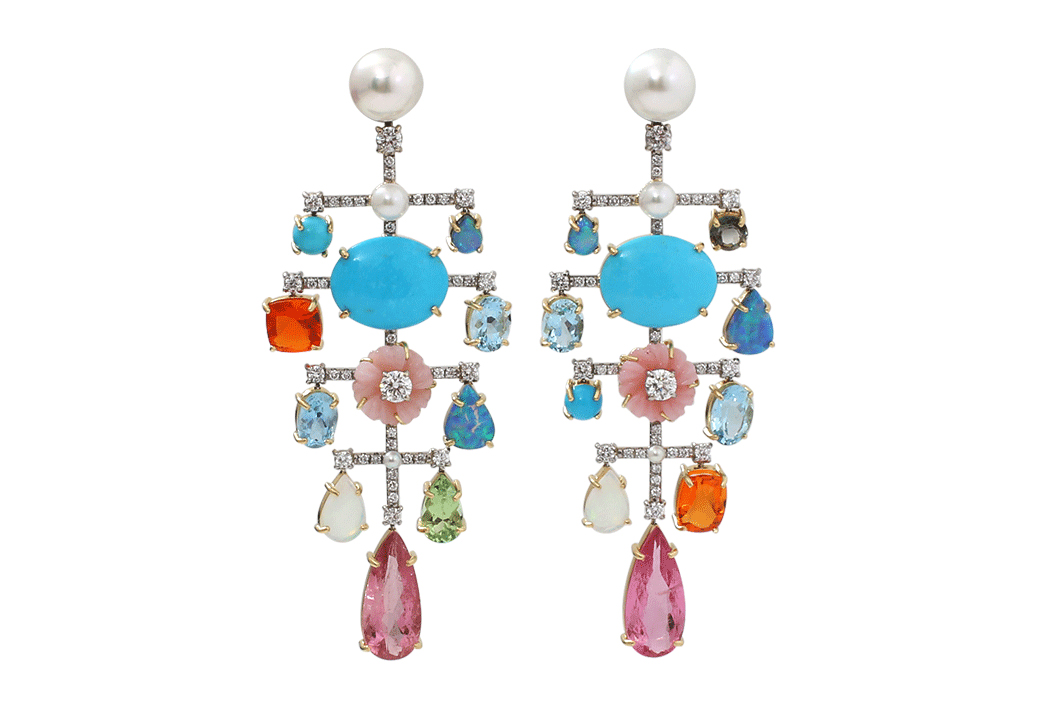
Irene Neuwirth
Irene Neuwirth
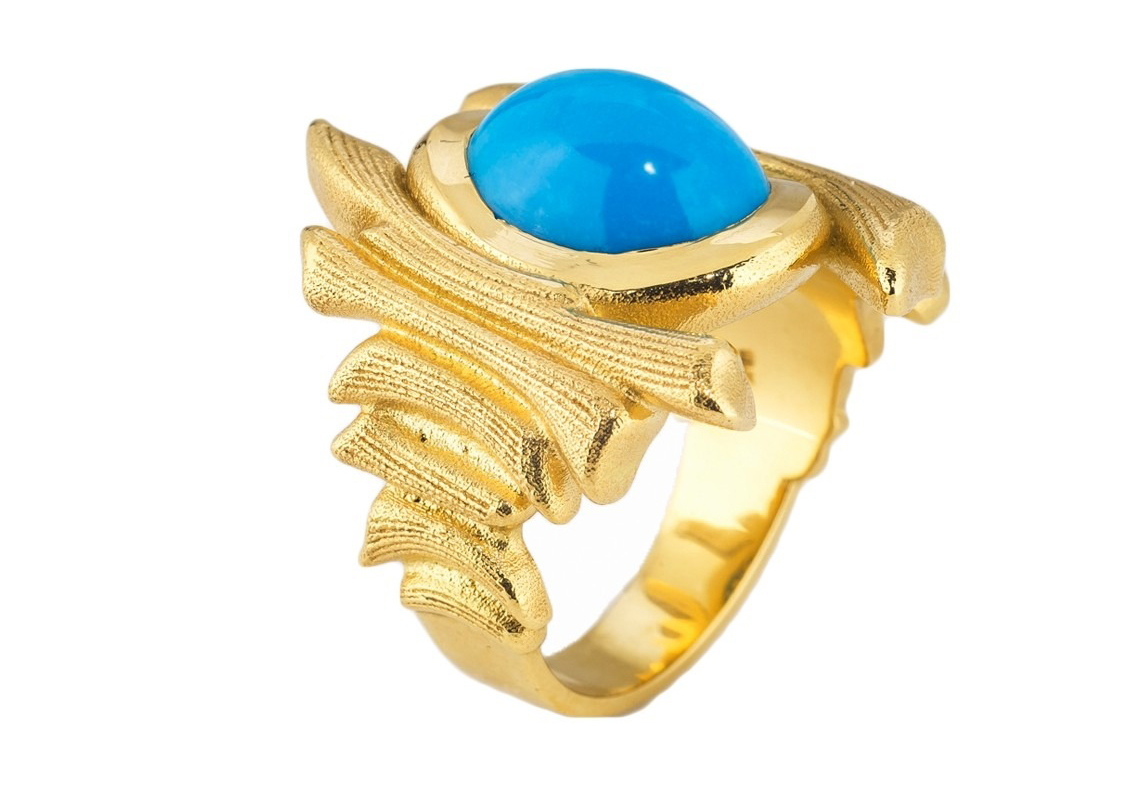
Jill Maurer
Jill Maurer
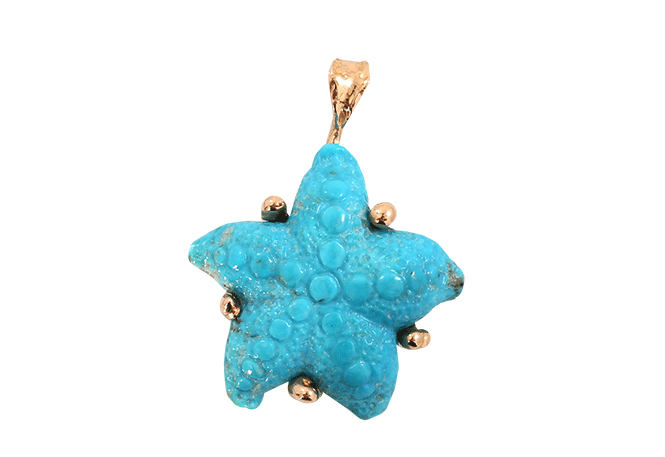
Lucifer Vir Honestus
Lucifer Vir Honestus
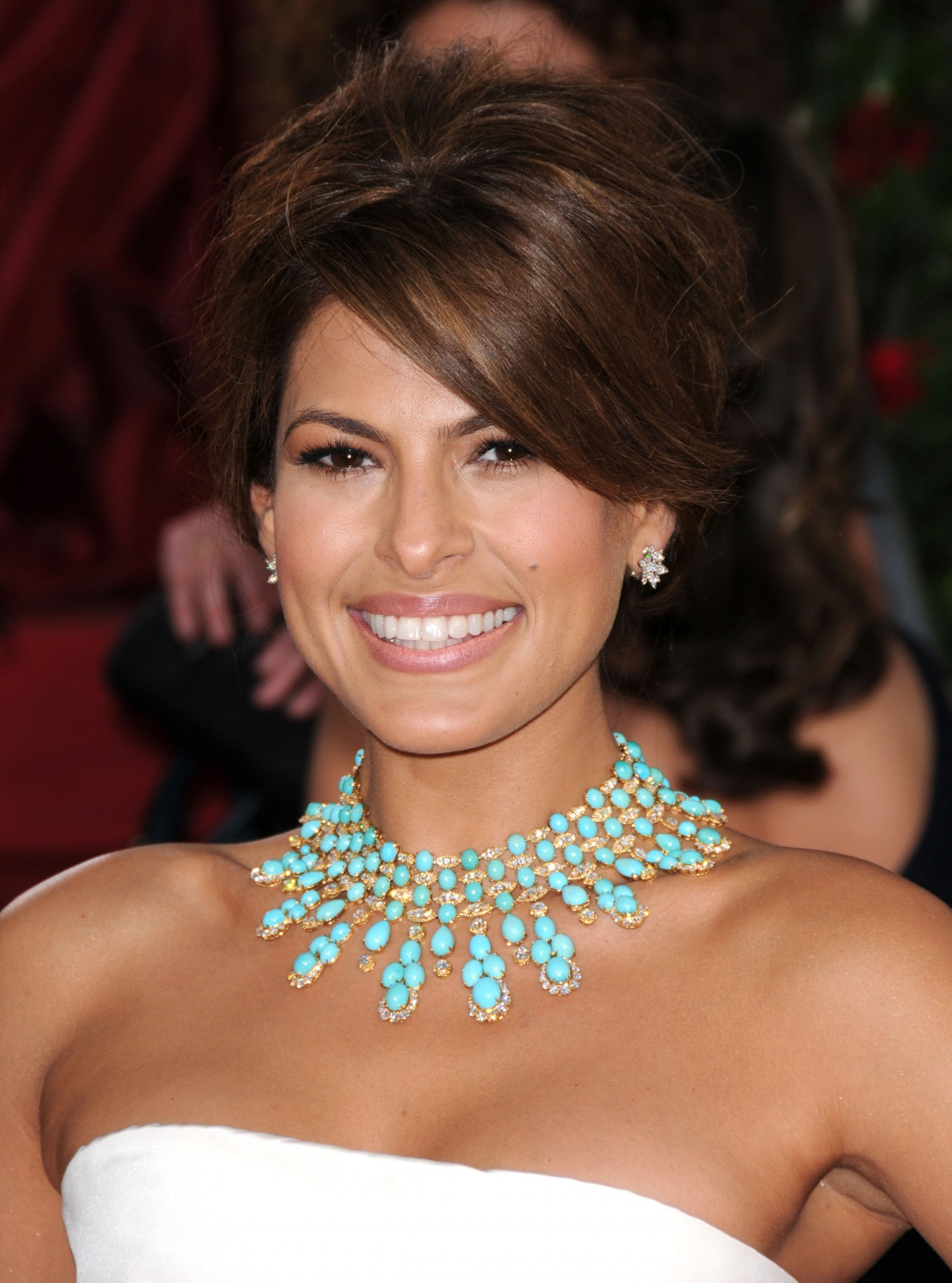
Eva Mendes
Eva Mendes
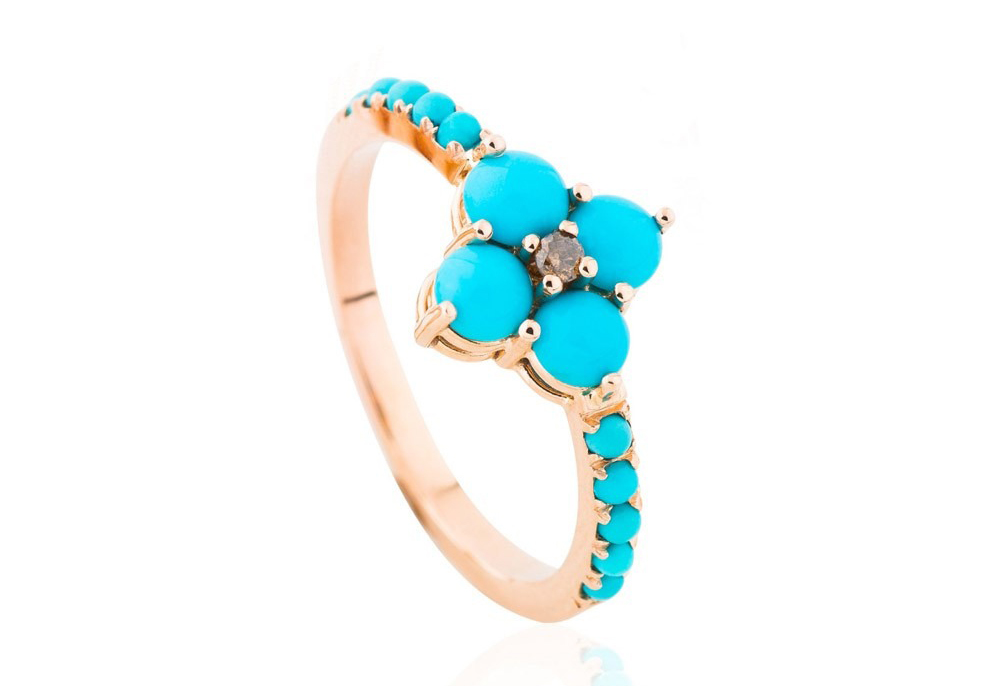
Joana Salazar
Joana Salazar
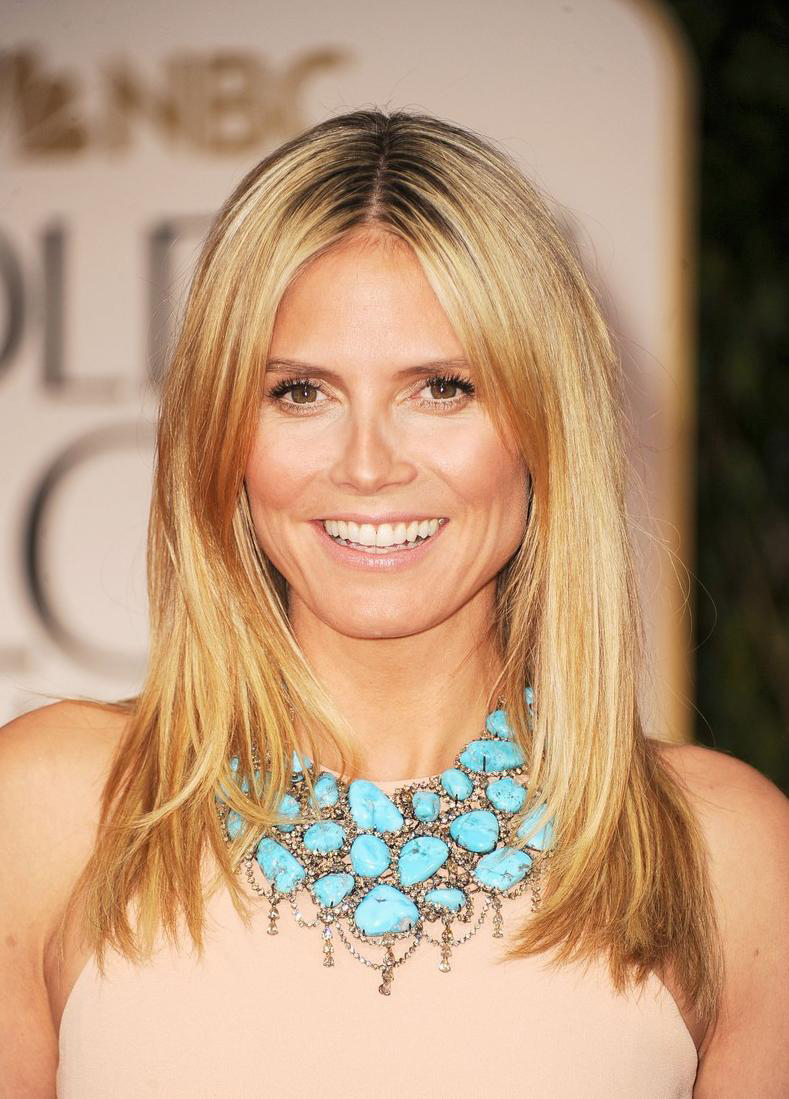
Heidi Klum
Heidi Klum
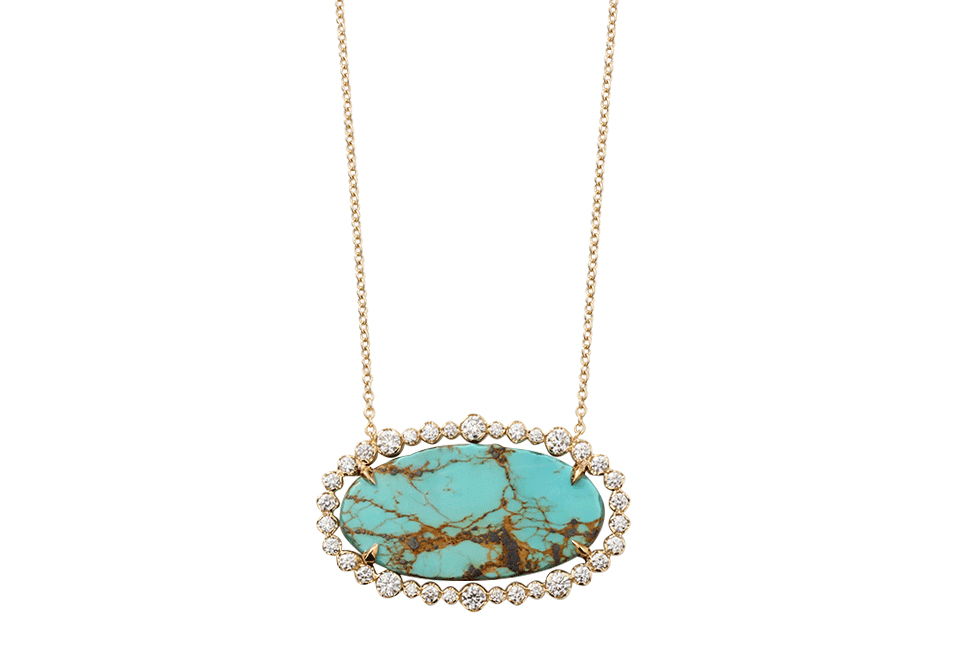
Jordan Alexander
Jordan Alexander
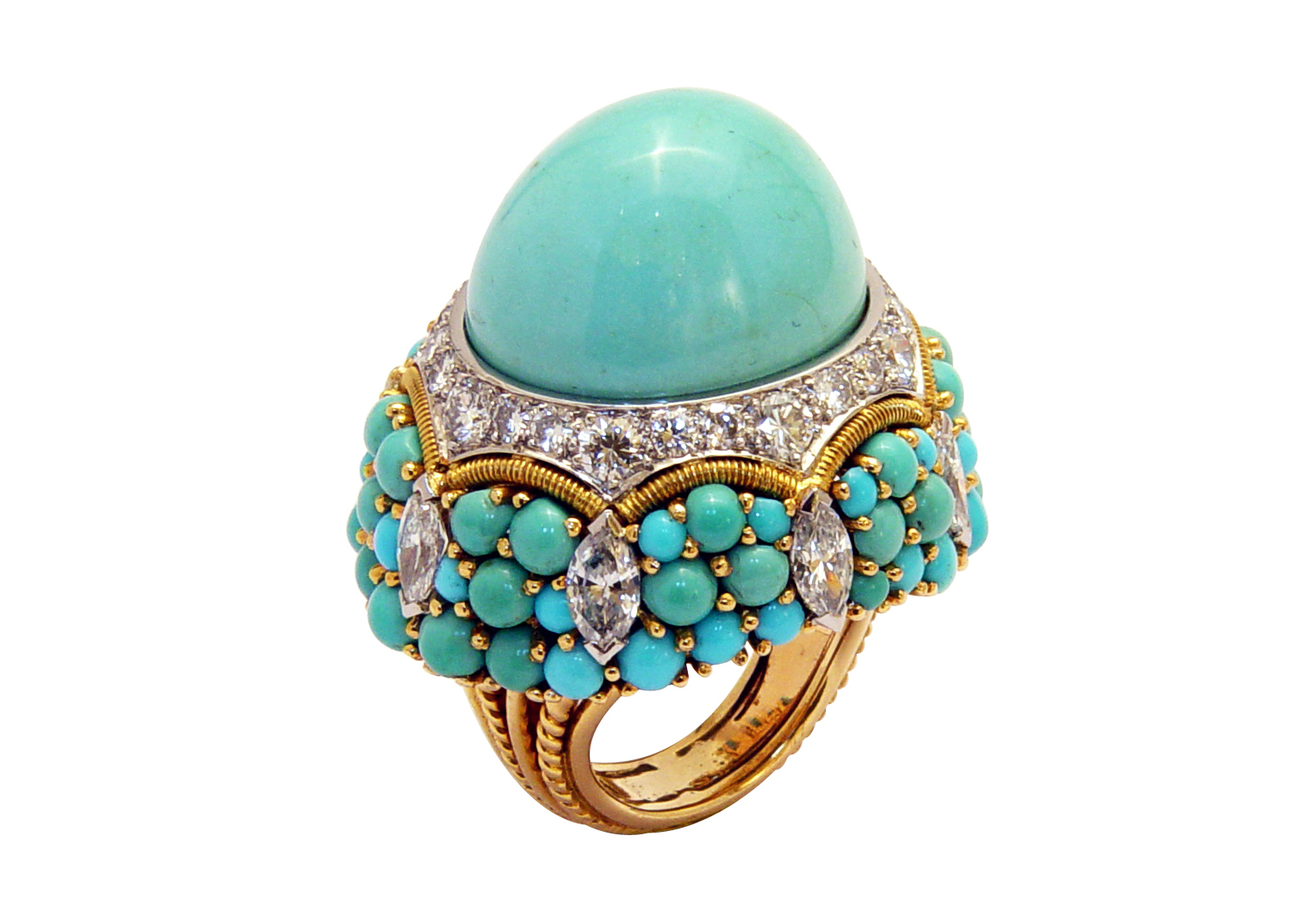
Marchak
Marchak
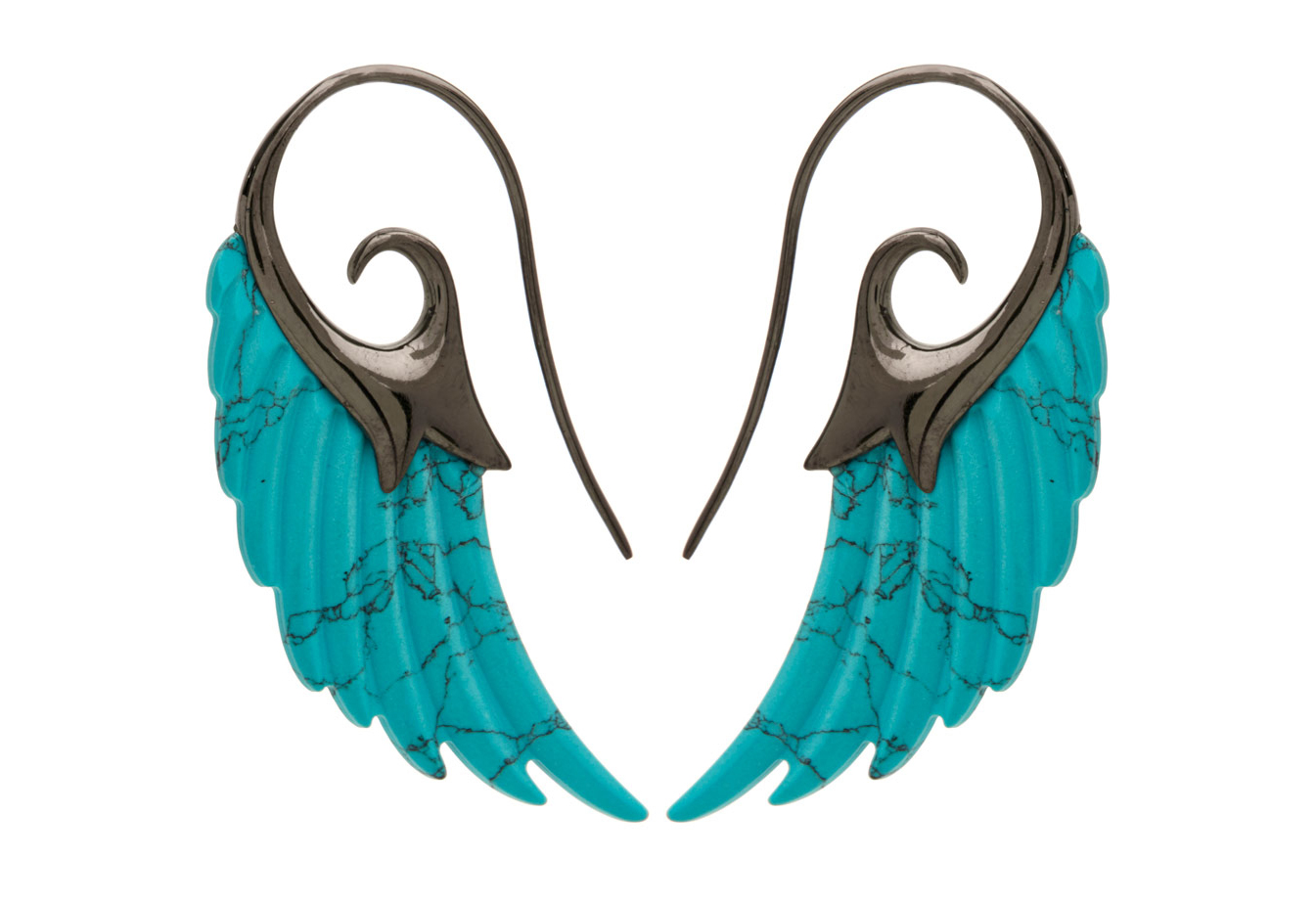
Noor Fares
Noor Fares
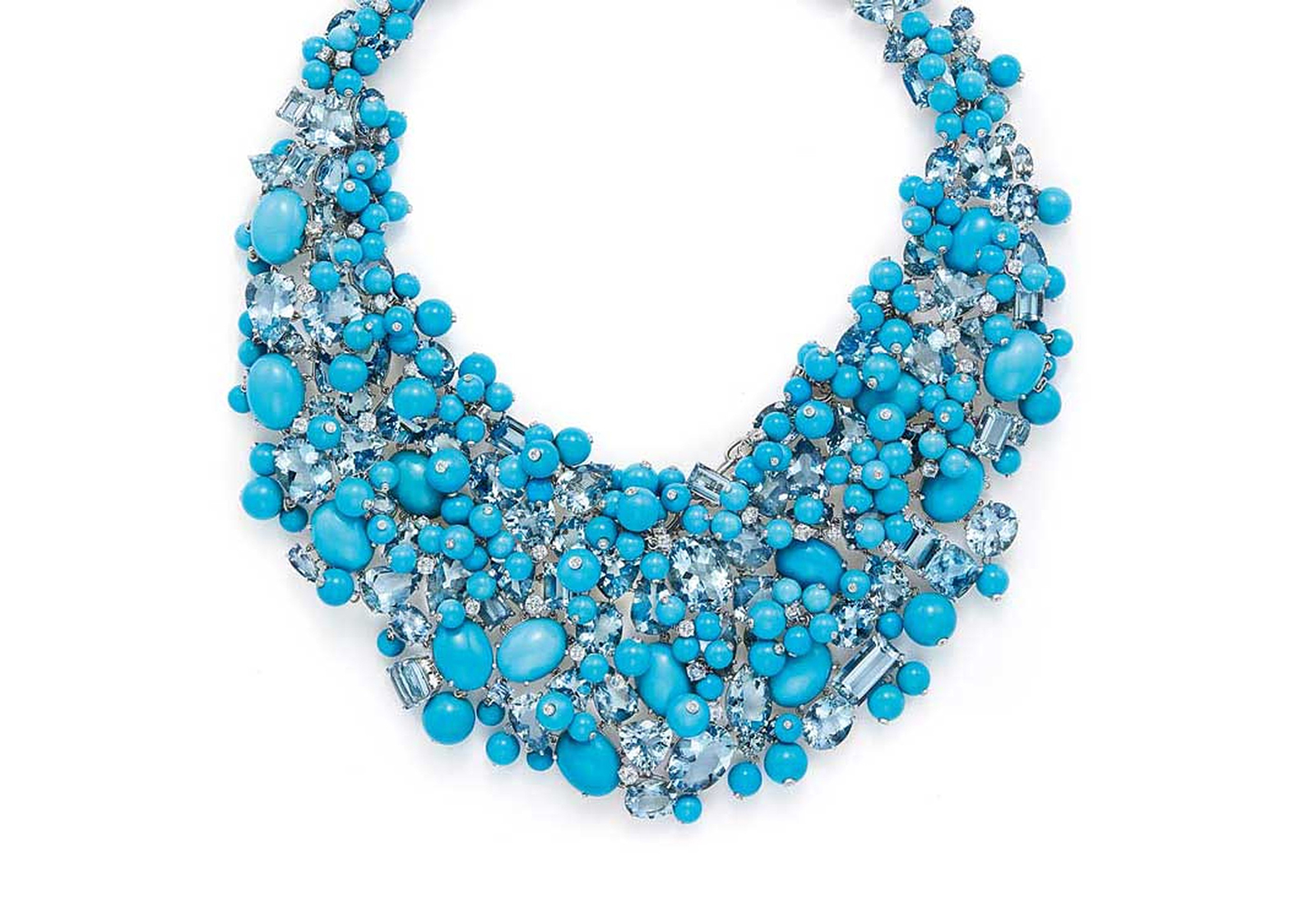
Tiffany&Co
Tiffany&Co
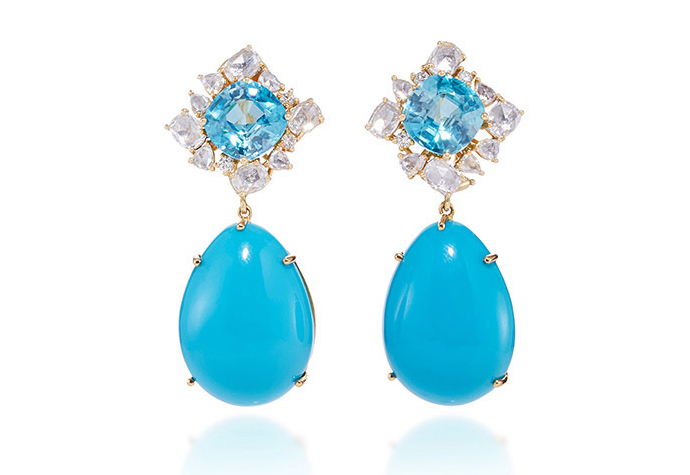
Pamela Huizenga
Pamela Huizenga
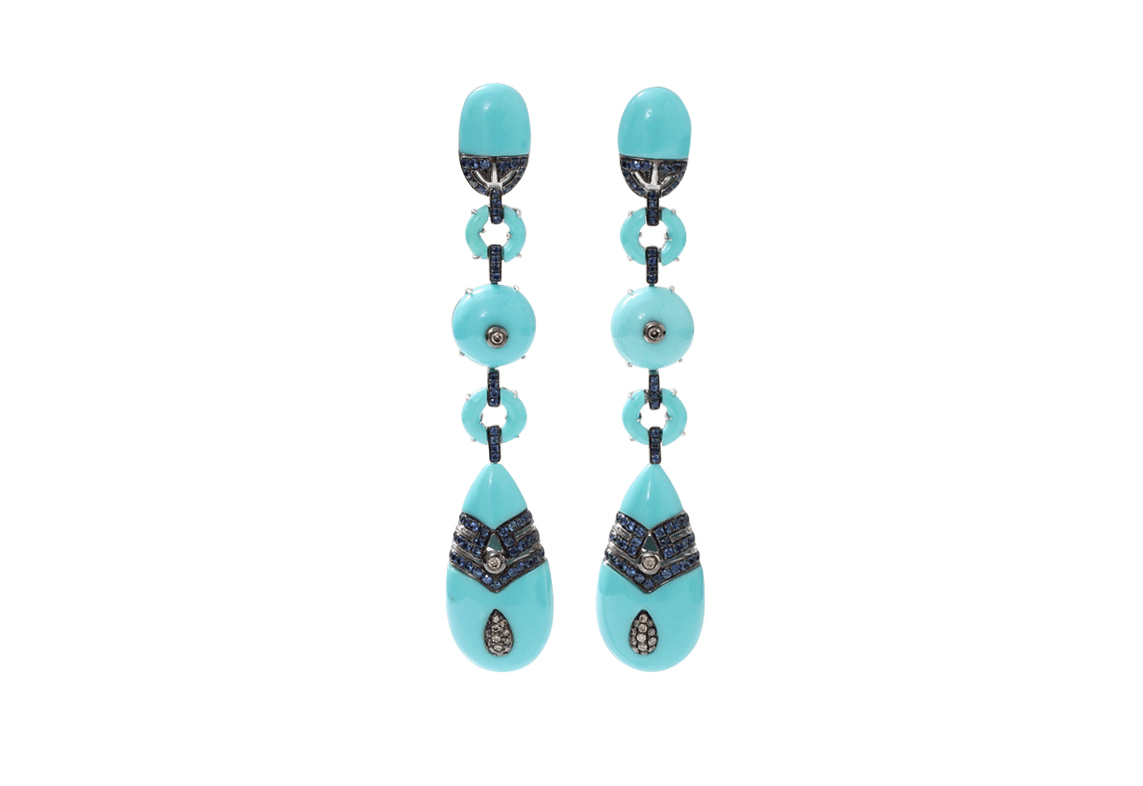
Wendy Yue
Wendy Yue
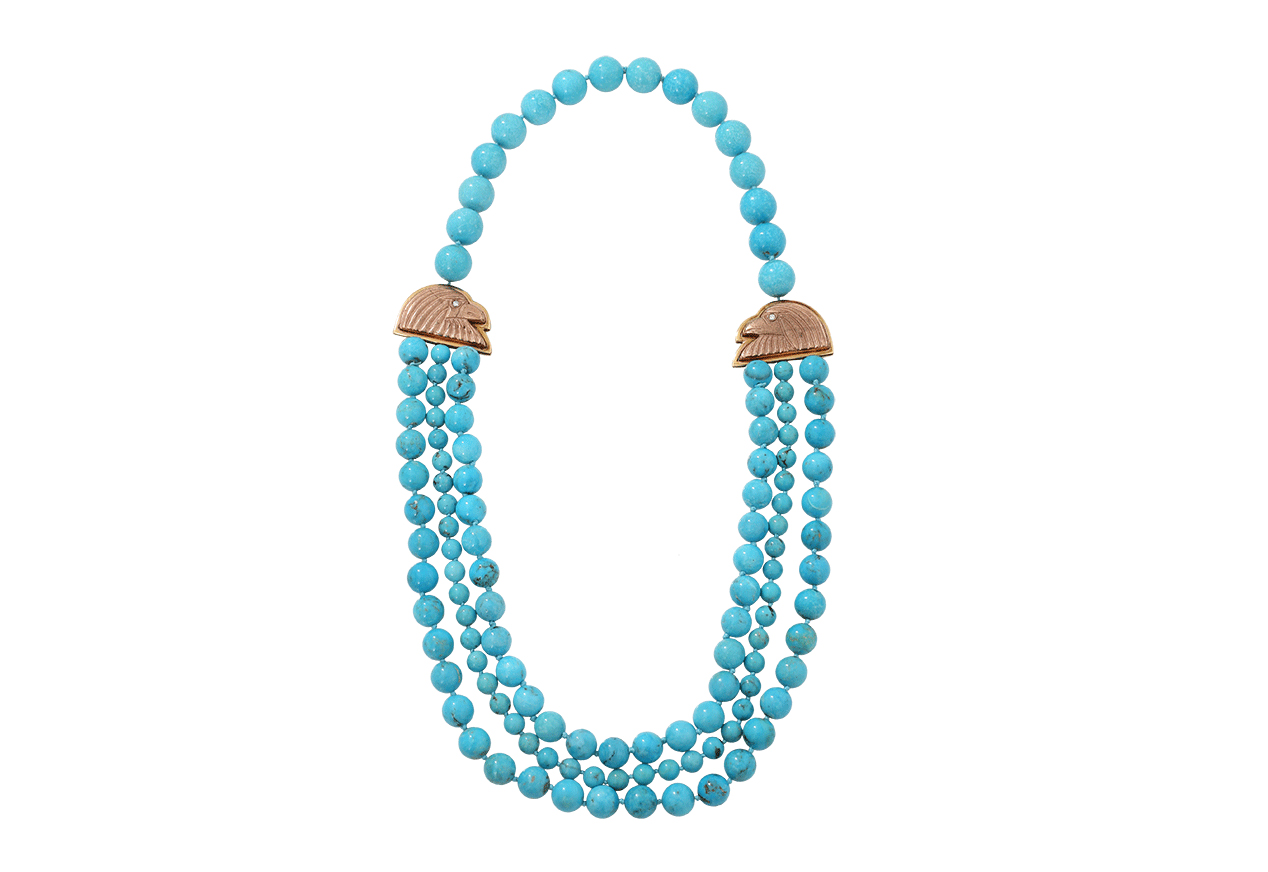
Silvia Furmanovich
Silvia Furmanovich
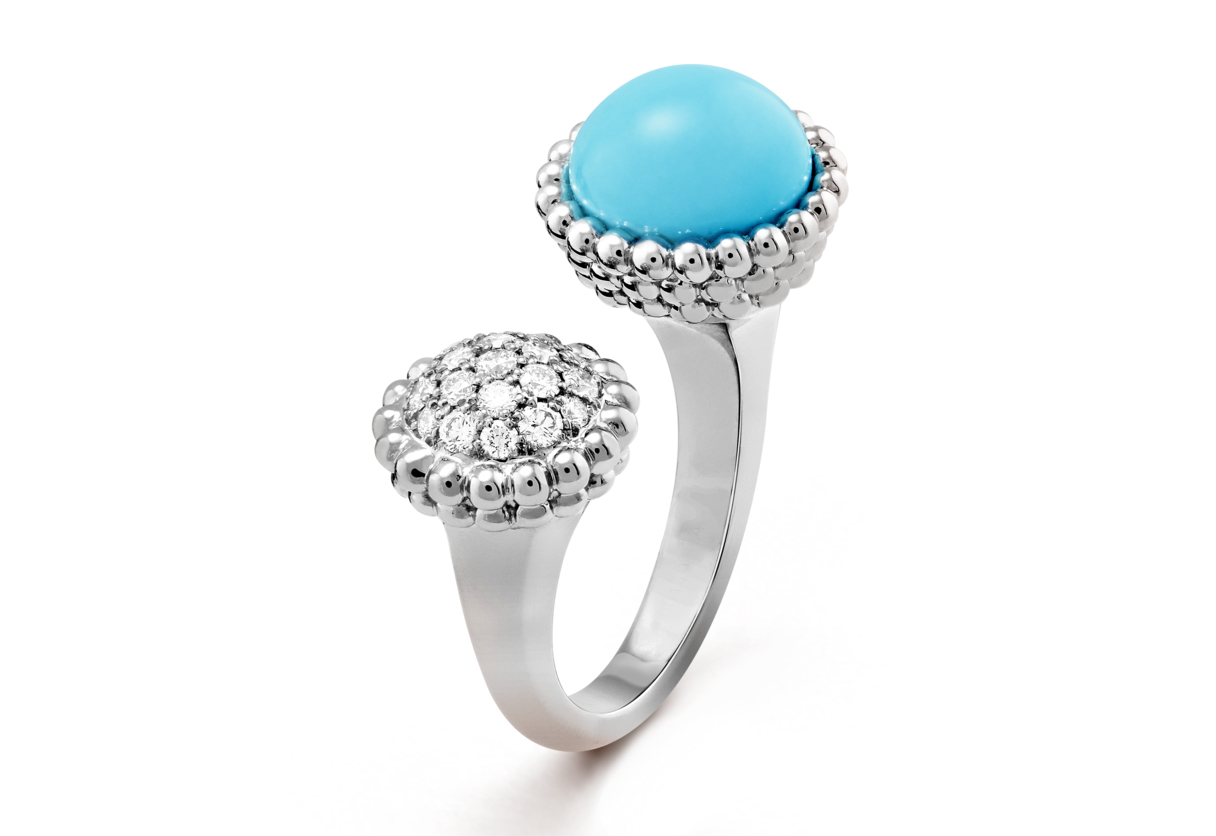
Van Cleef&Arpels
Van Cleef&Arpels
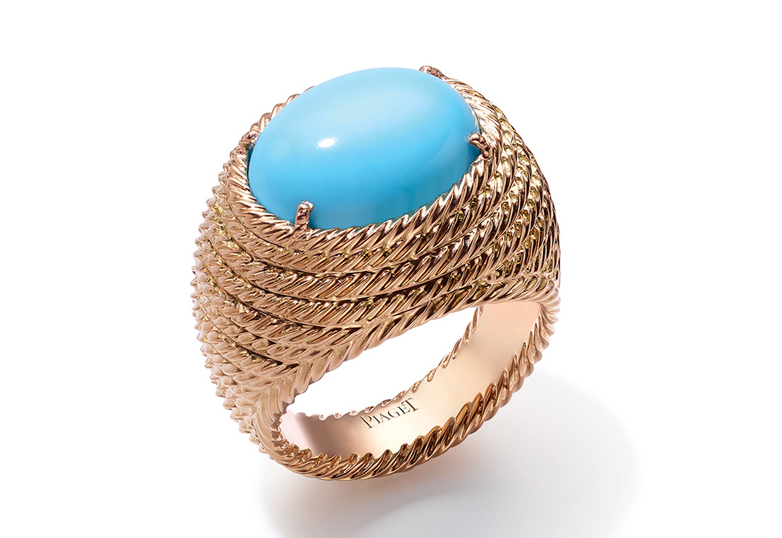
Piaget
Piaget
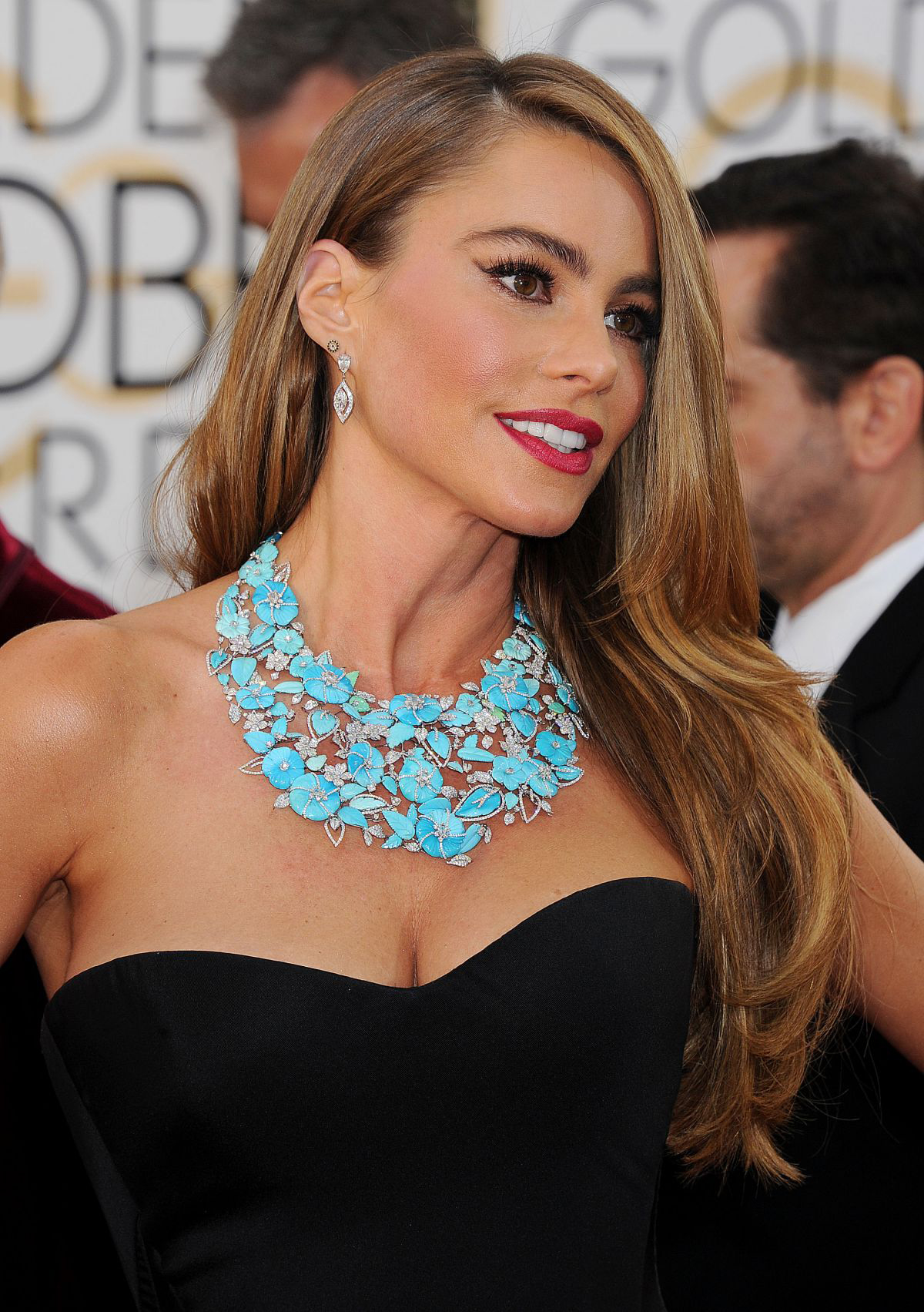
Sofia Vergara
Sofia Vergara
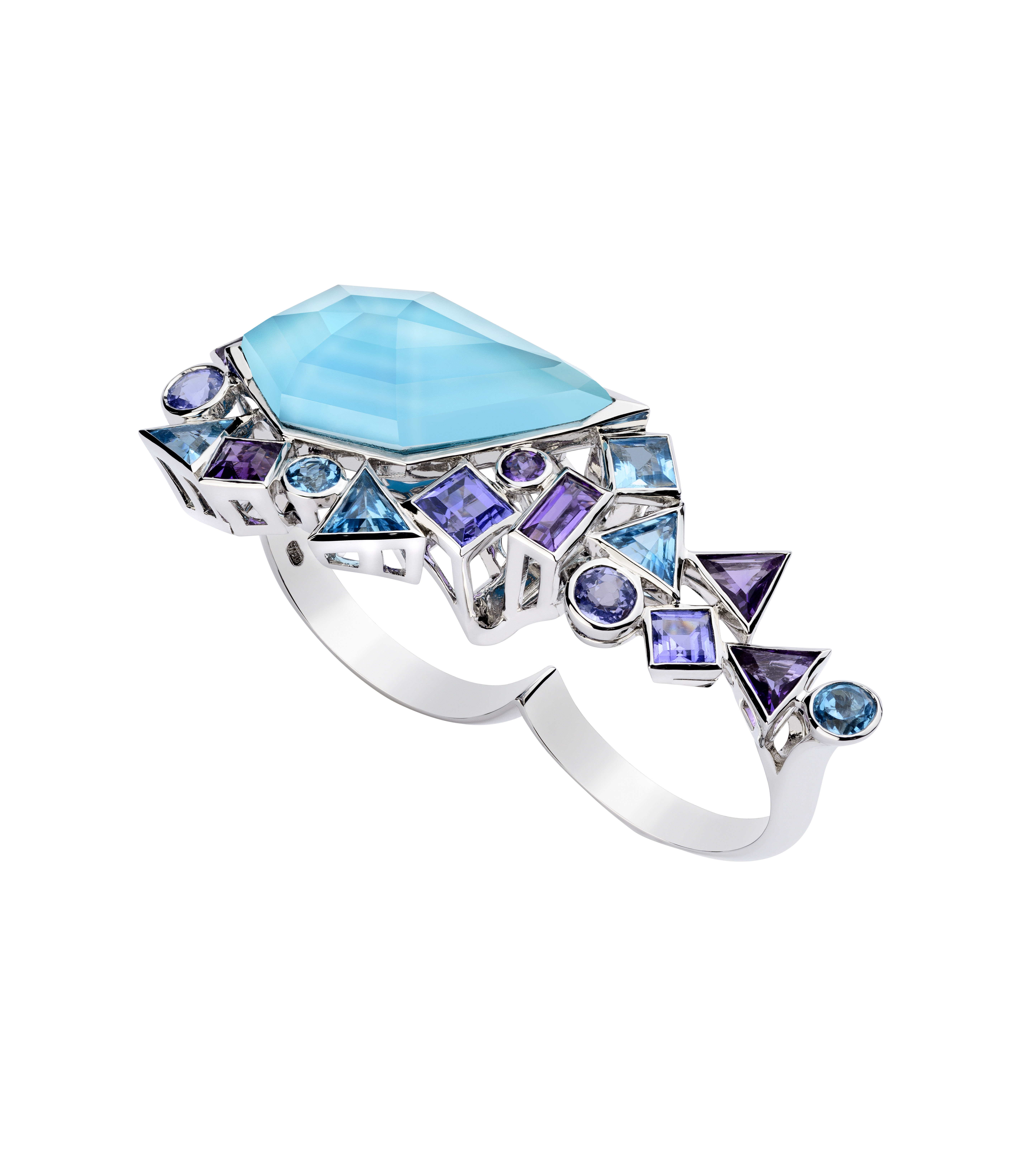
Stephen Webster
Stephen Webster
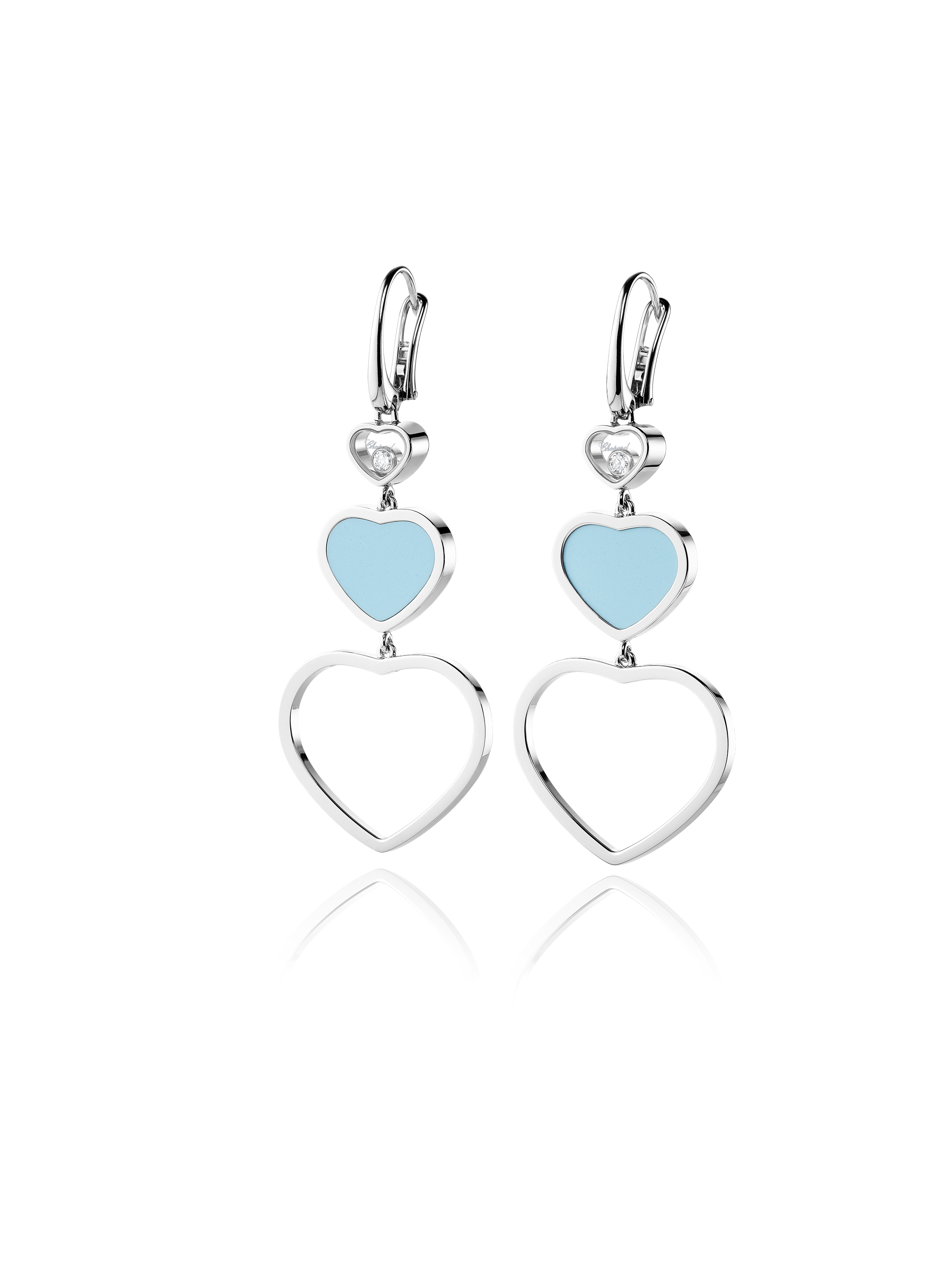
Chopard
Chopard
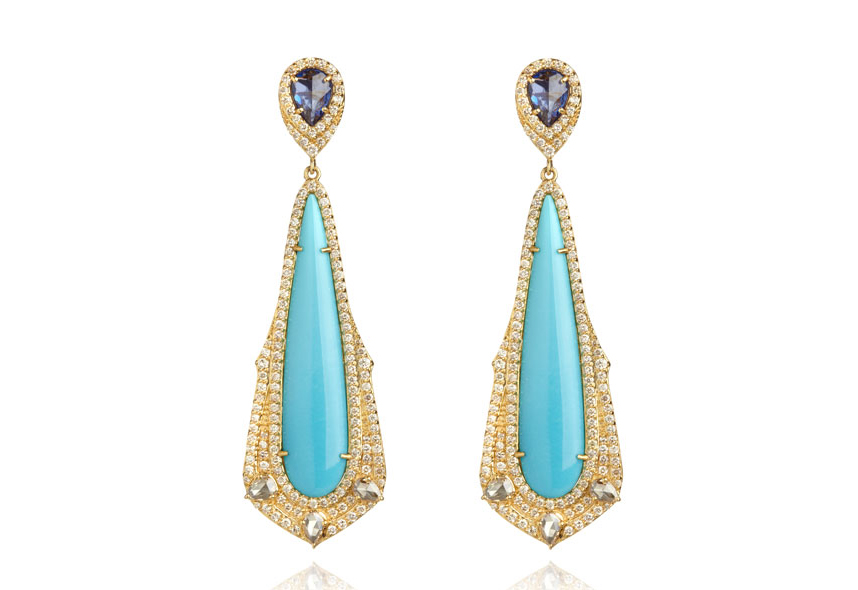
Sutra
Sutra

WORDS
Katerina Perez is a jewellery insider, journalist and brand consultant with more than 15 years’ experience in the jewellery sector. Paris-based, Katerina has worked as a freelance journalist and content editor since 2011, writing articles for international publications. To share her jewellery knowledge and expertise, Katerina founded this website and launched her @katerina_perez Instagram in 2013.
Related Articles
Latest Stories
Add articles and images to your favourites. Just

Legacy of Love:The Dreamlike Jewels of Emirati Designer Mariyeh Ghelichkhani
During our meeting in Dubai, we spoke about the importance of family, the sweetness of finding joy through creativity, and the ability to translate dreamy visions and deep feelings into wearable pieces…
Jewels Katerina Perez Loves
Continue Reading
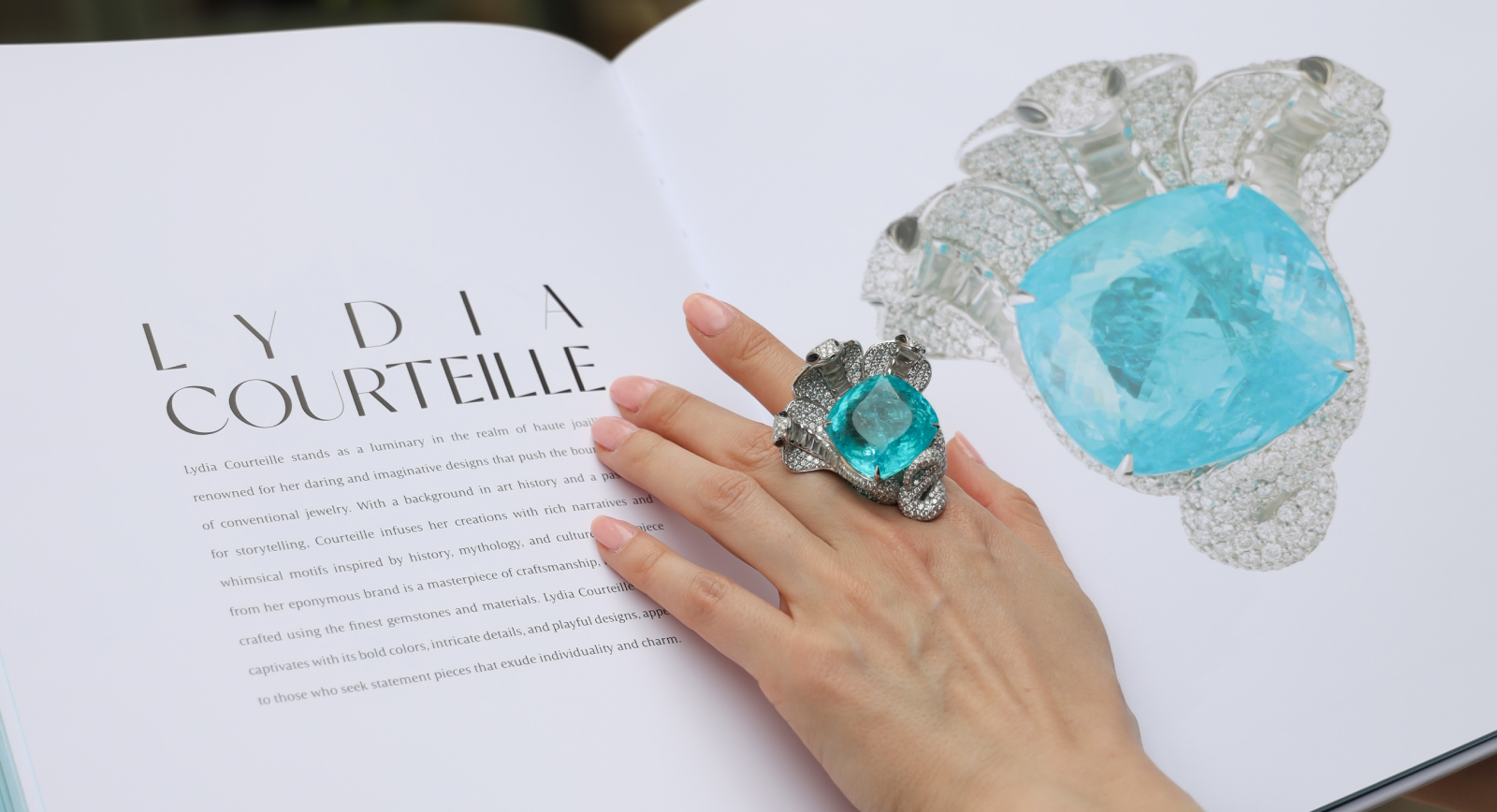
Writing Adventures:Co-Authoring the Book
Paraiba: The Legacy of a Color
Brand Focus: Cartier
Jewellery Insights straight to your inbox

